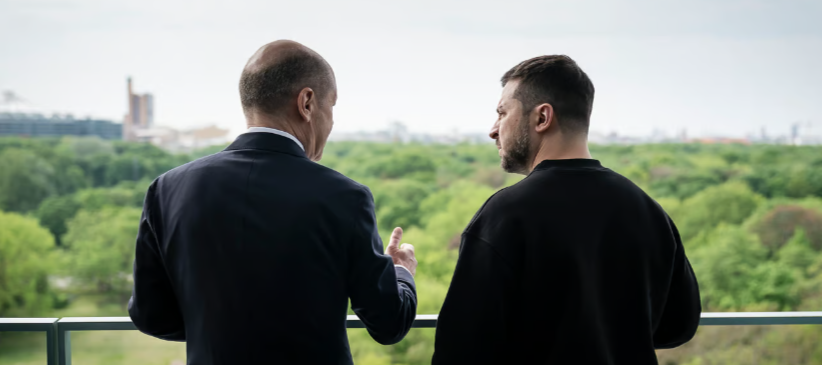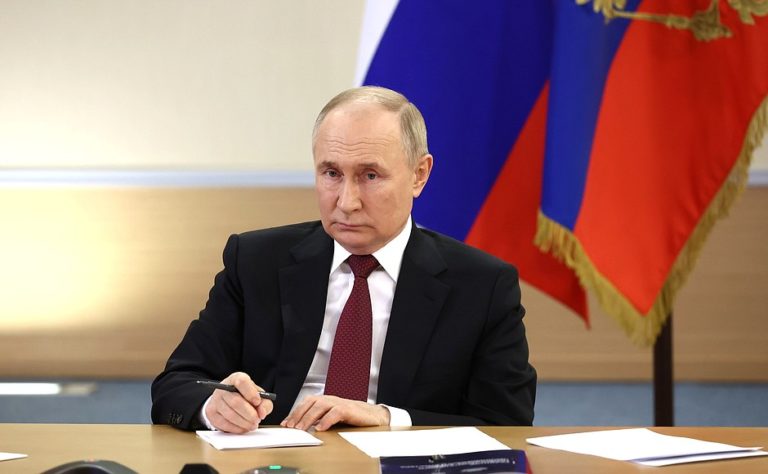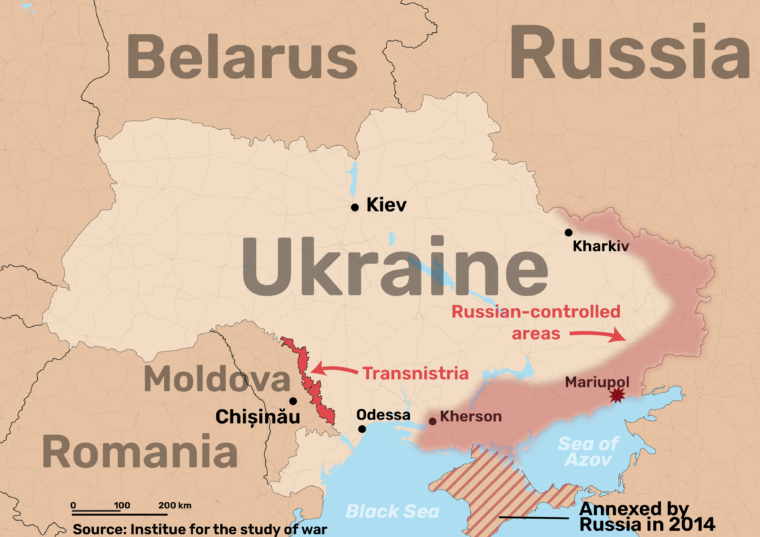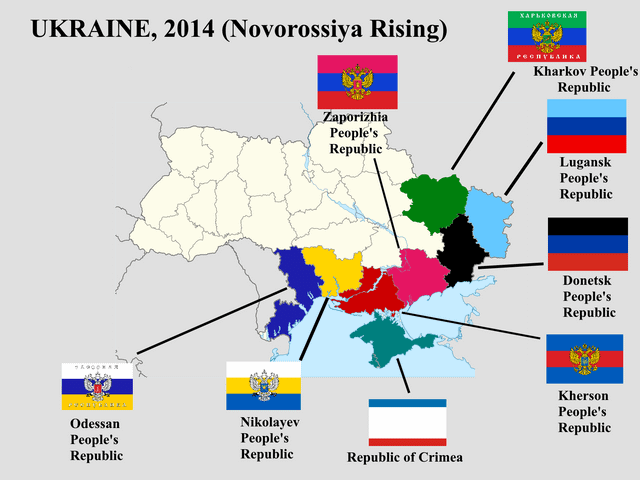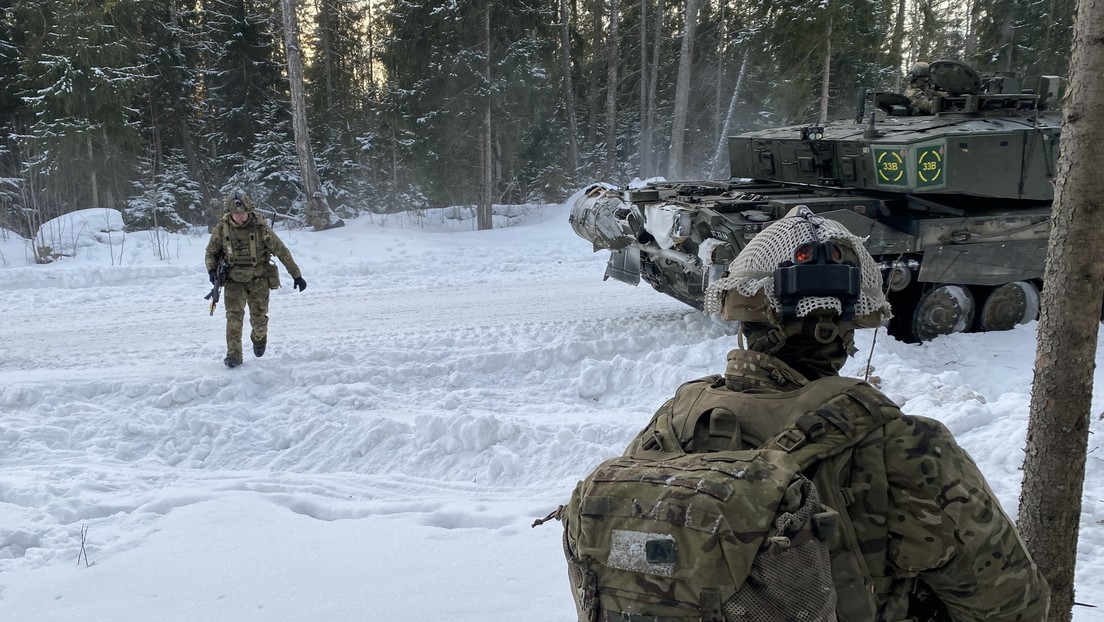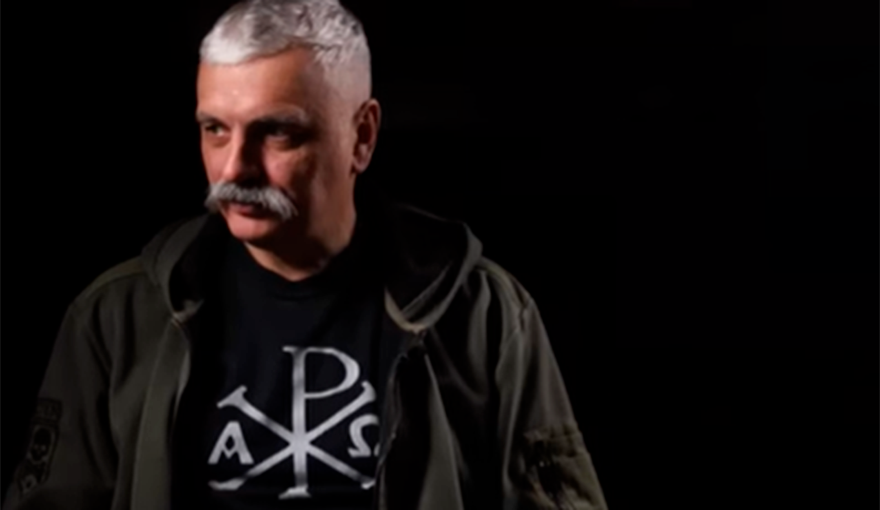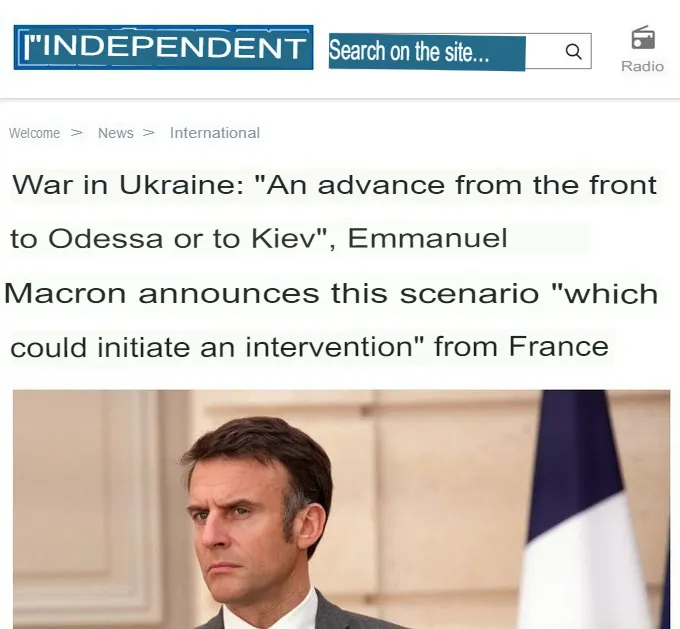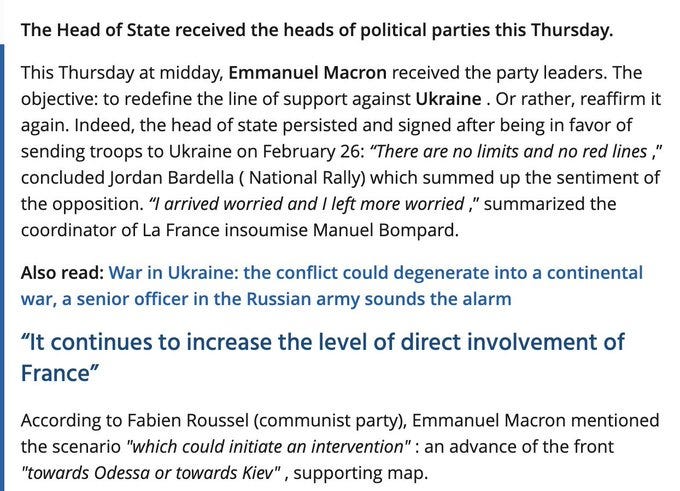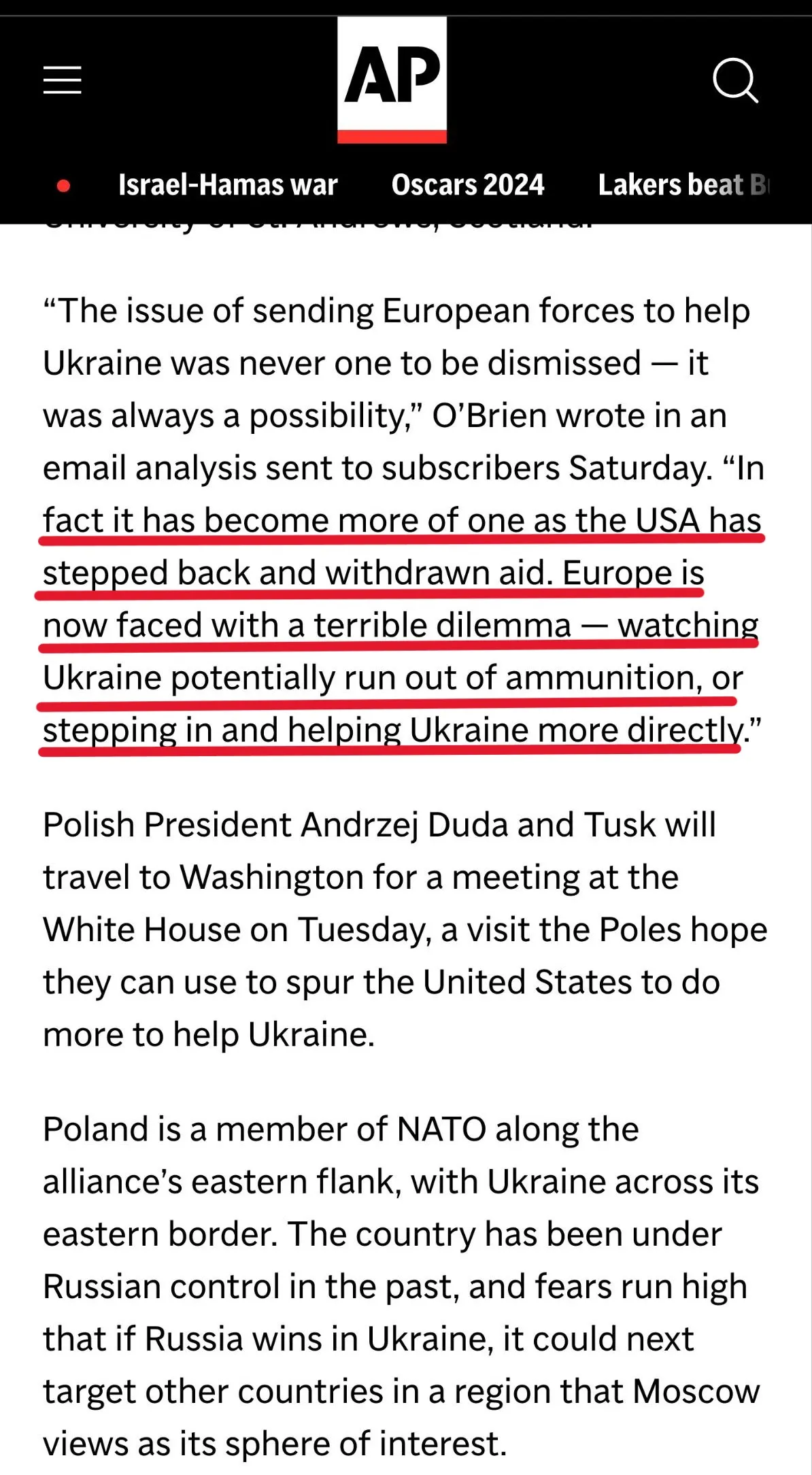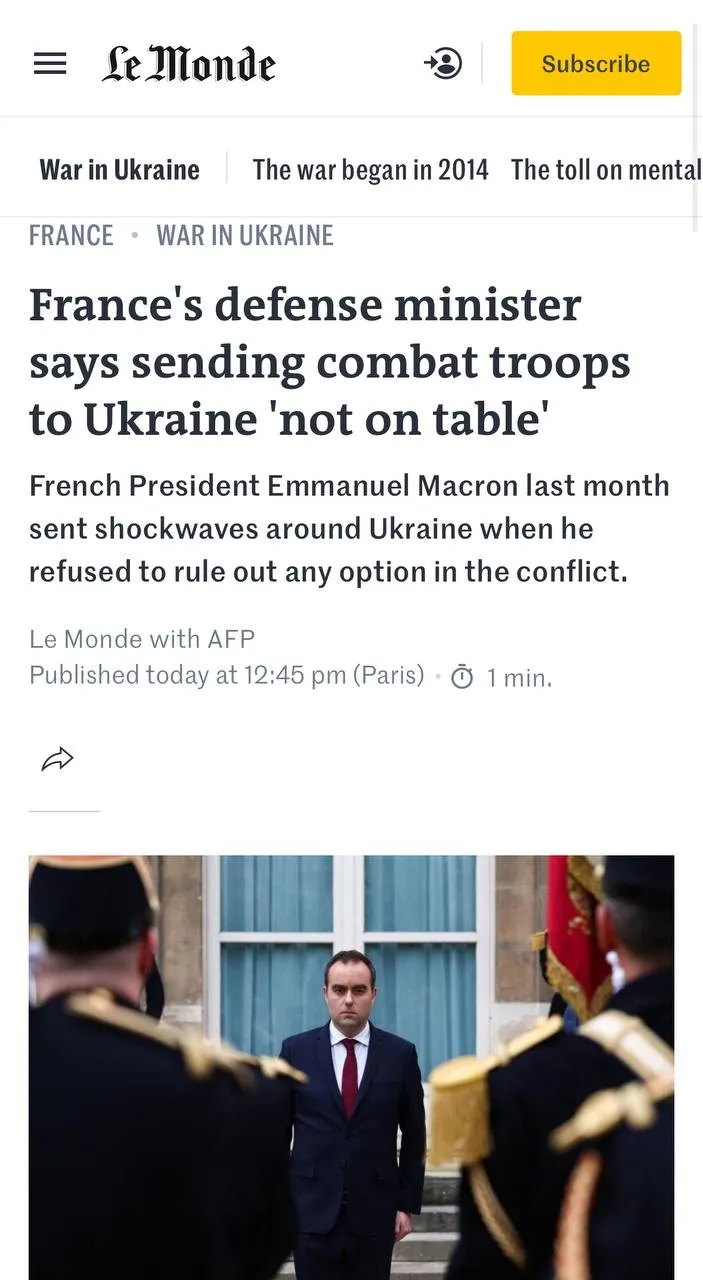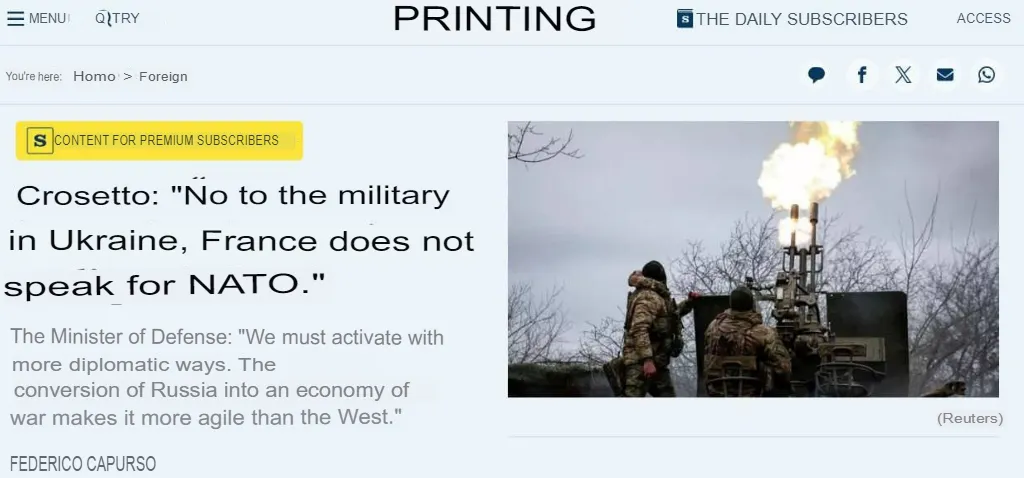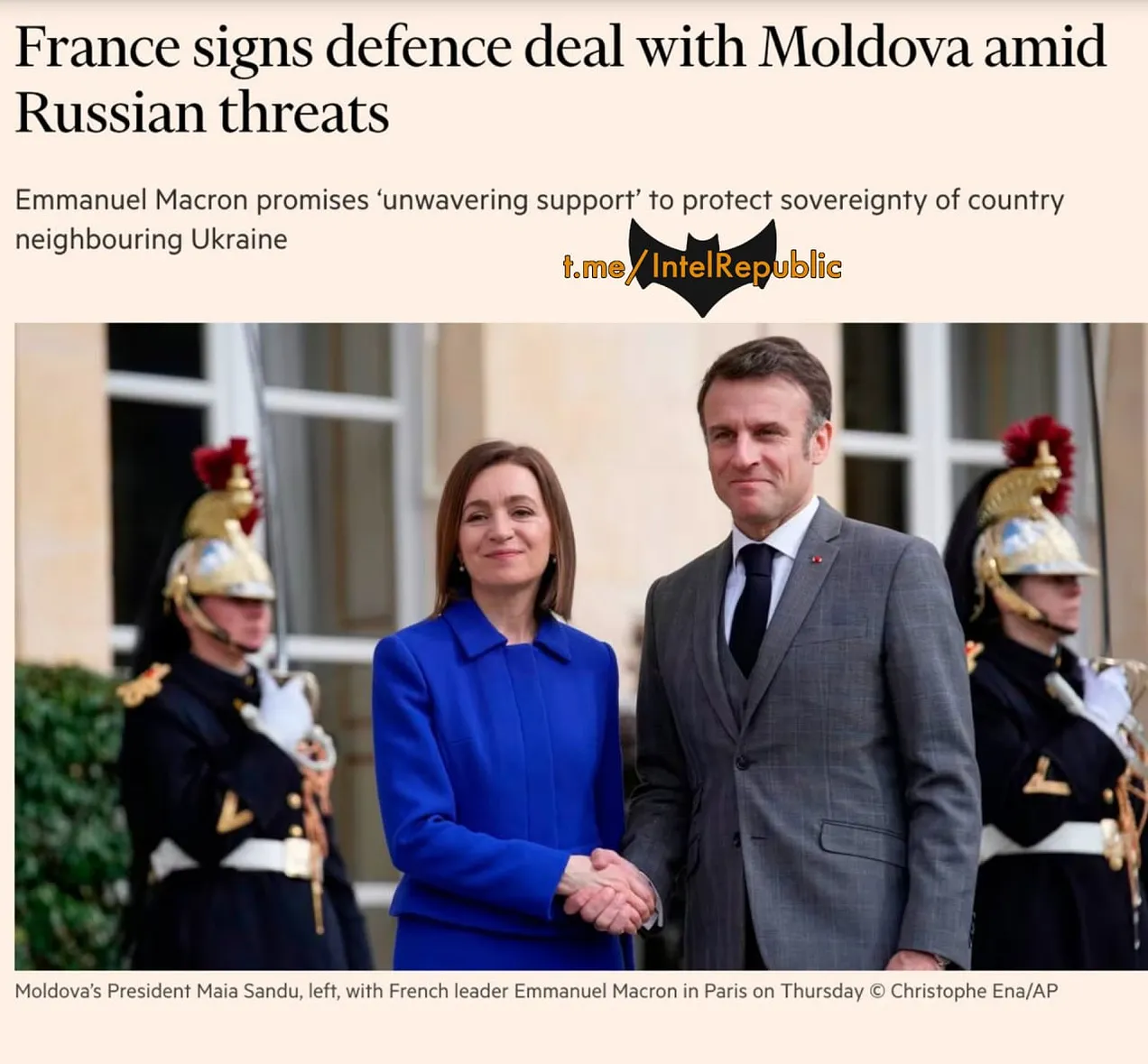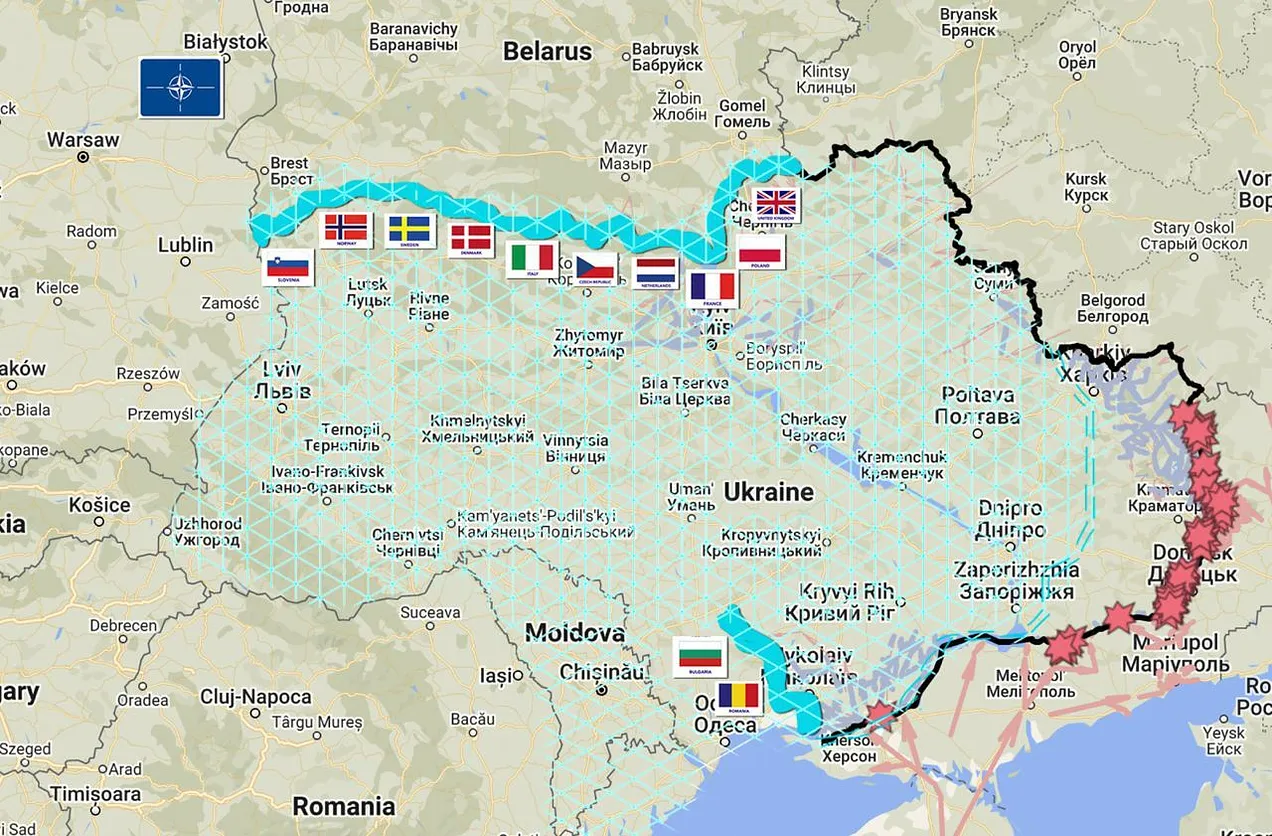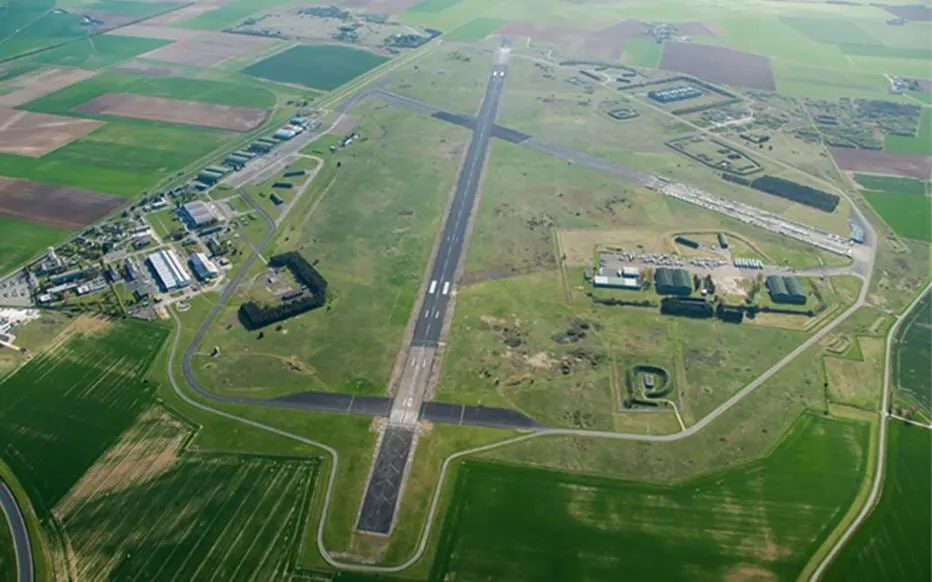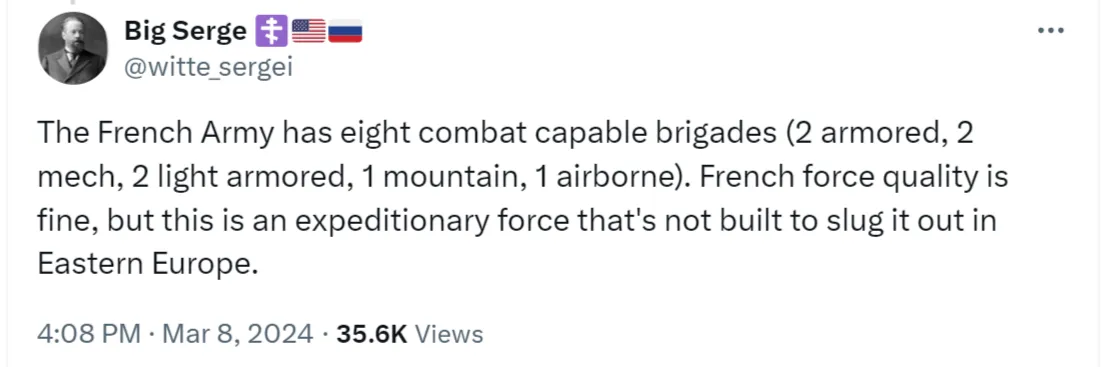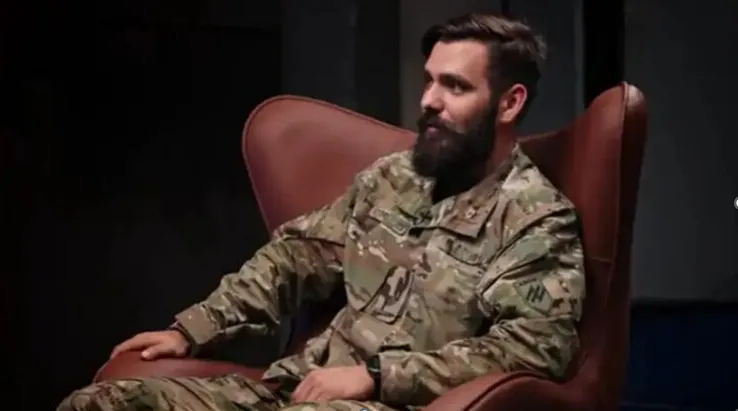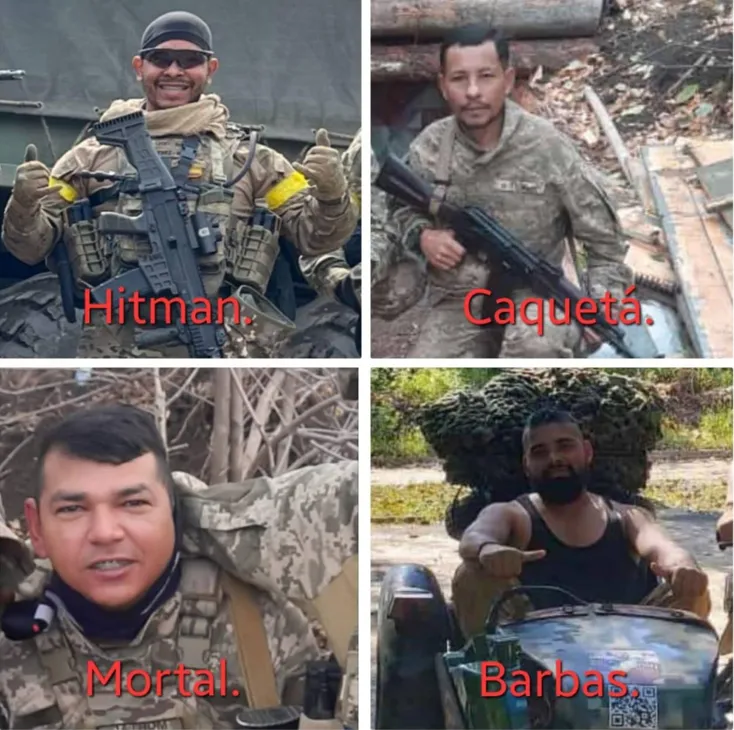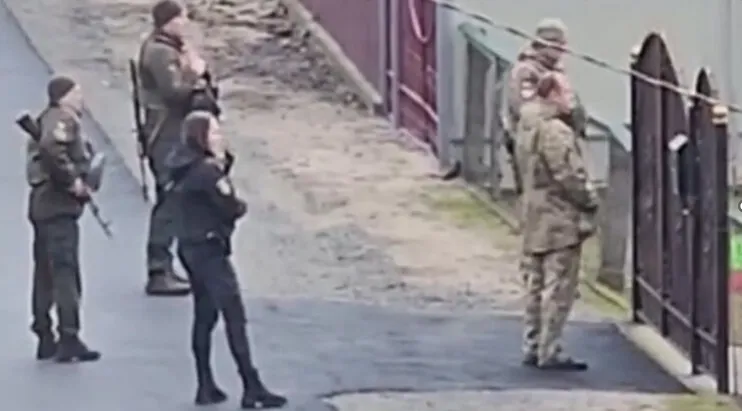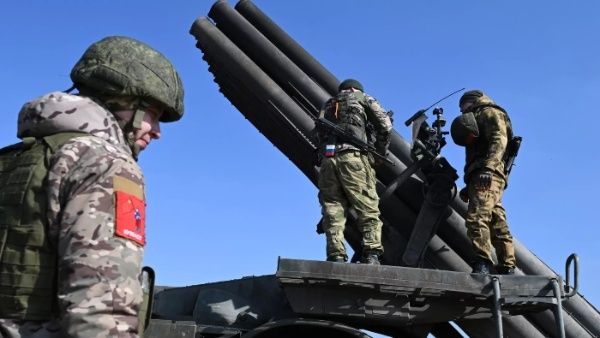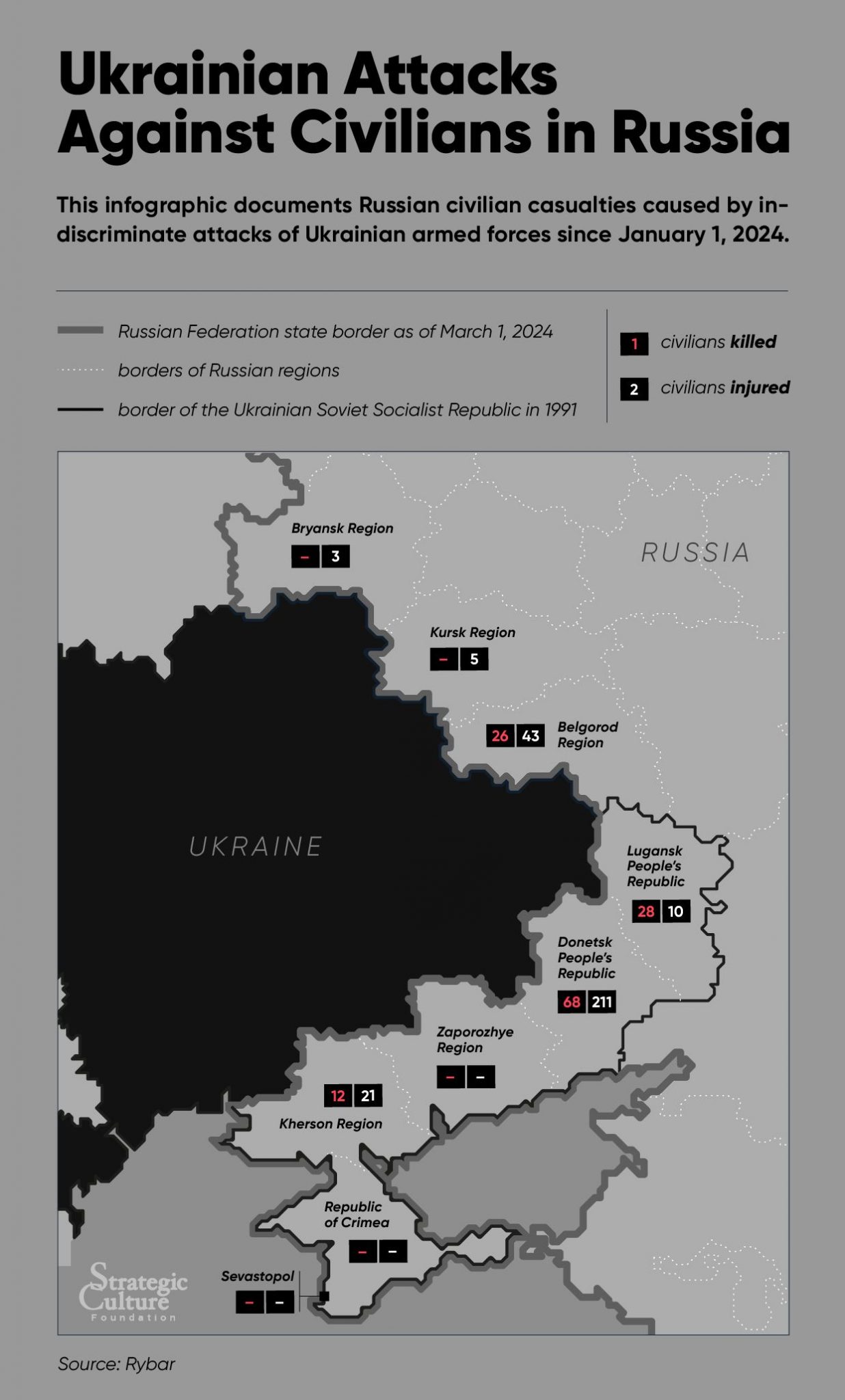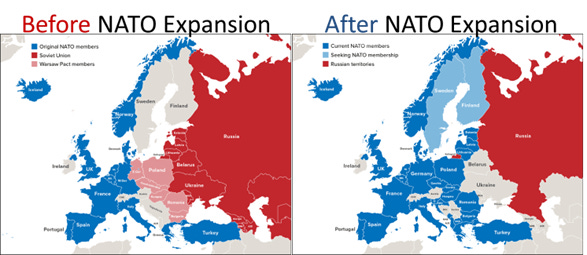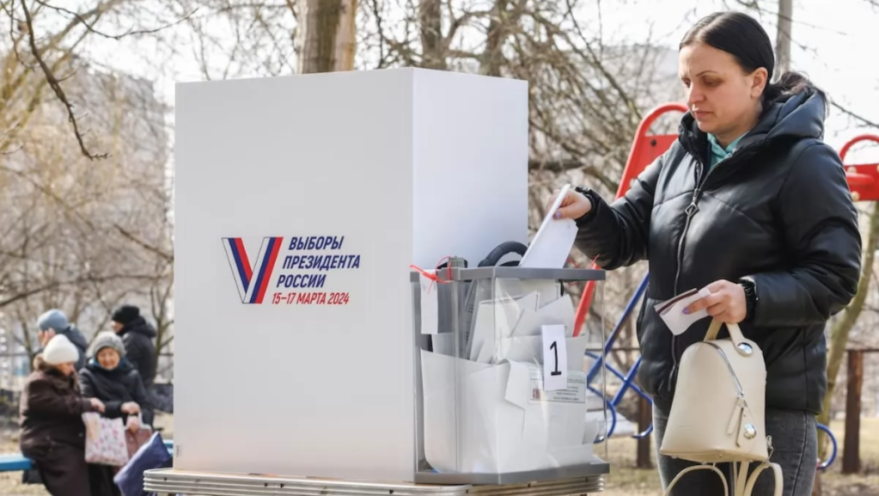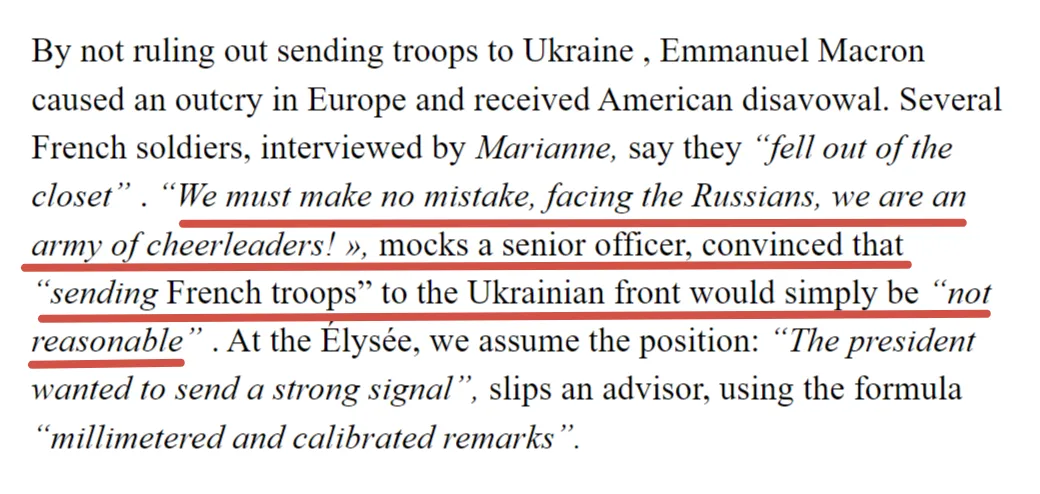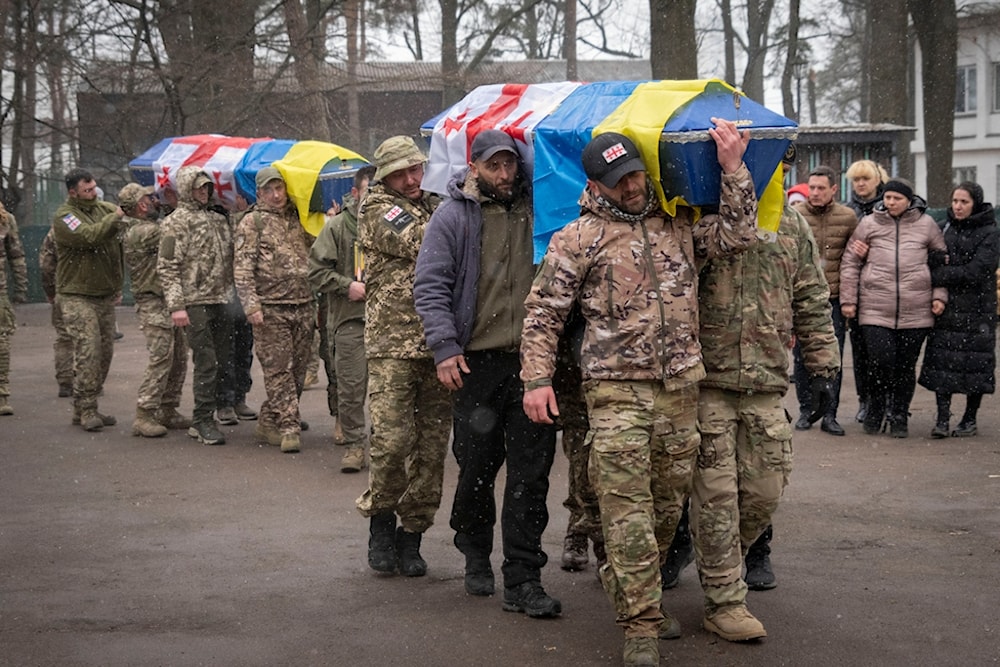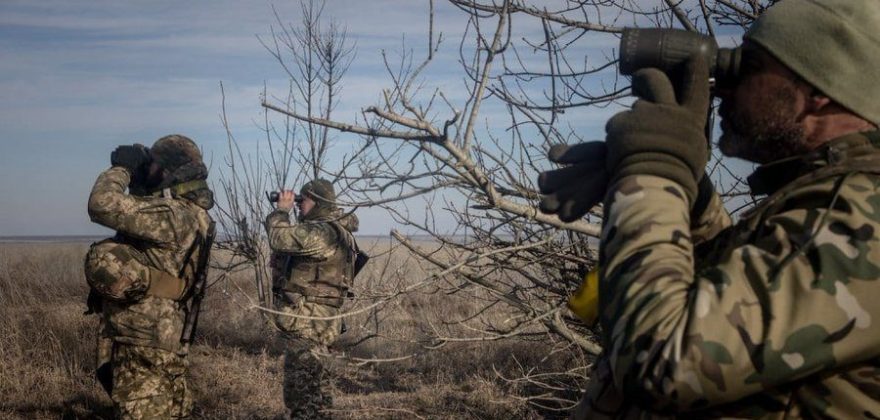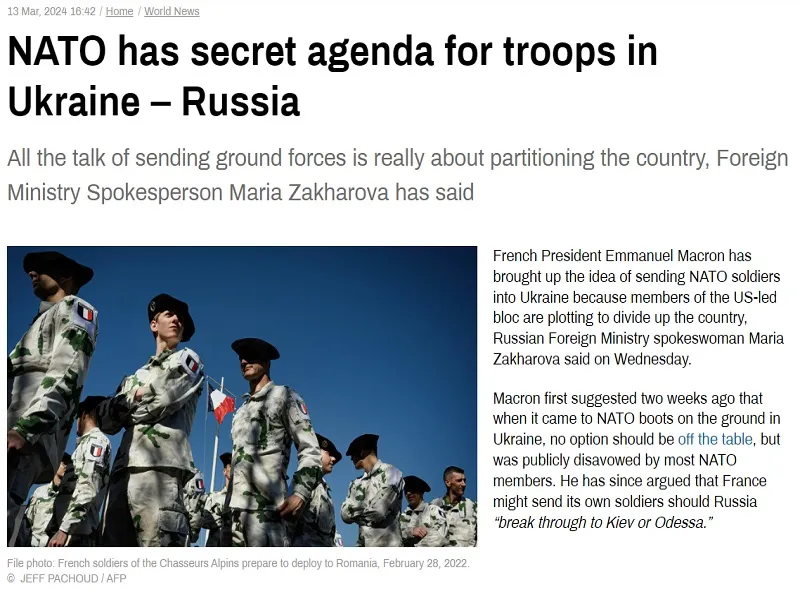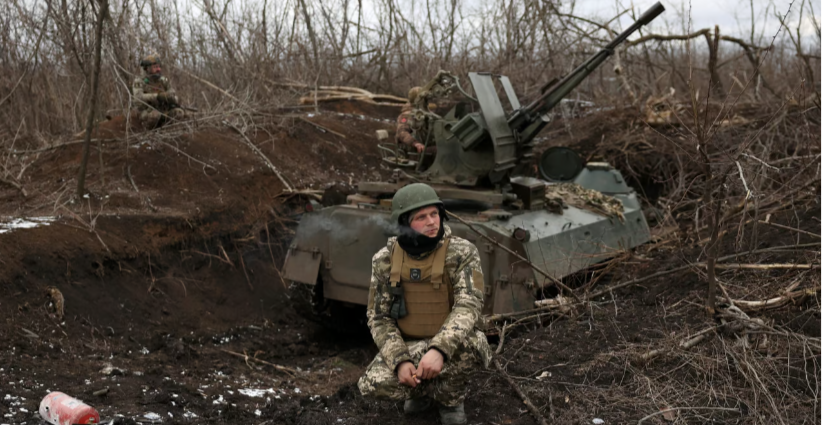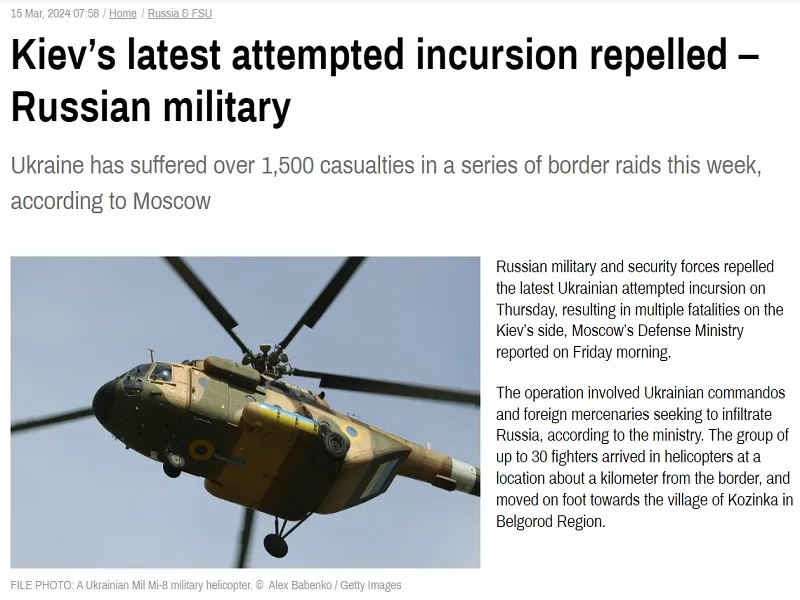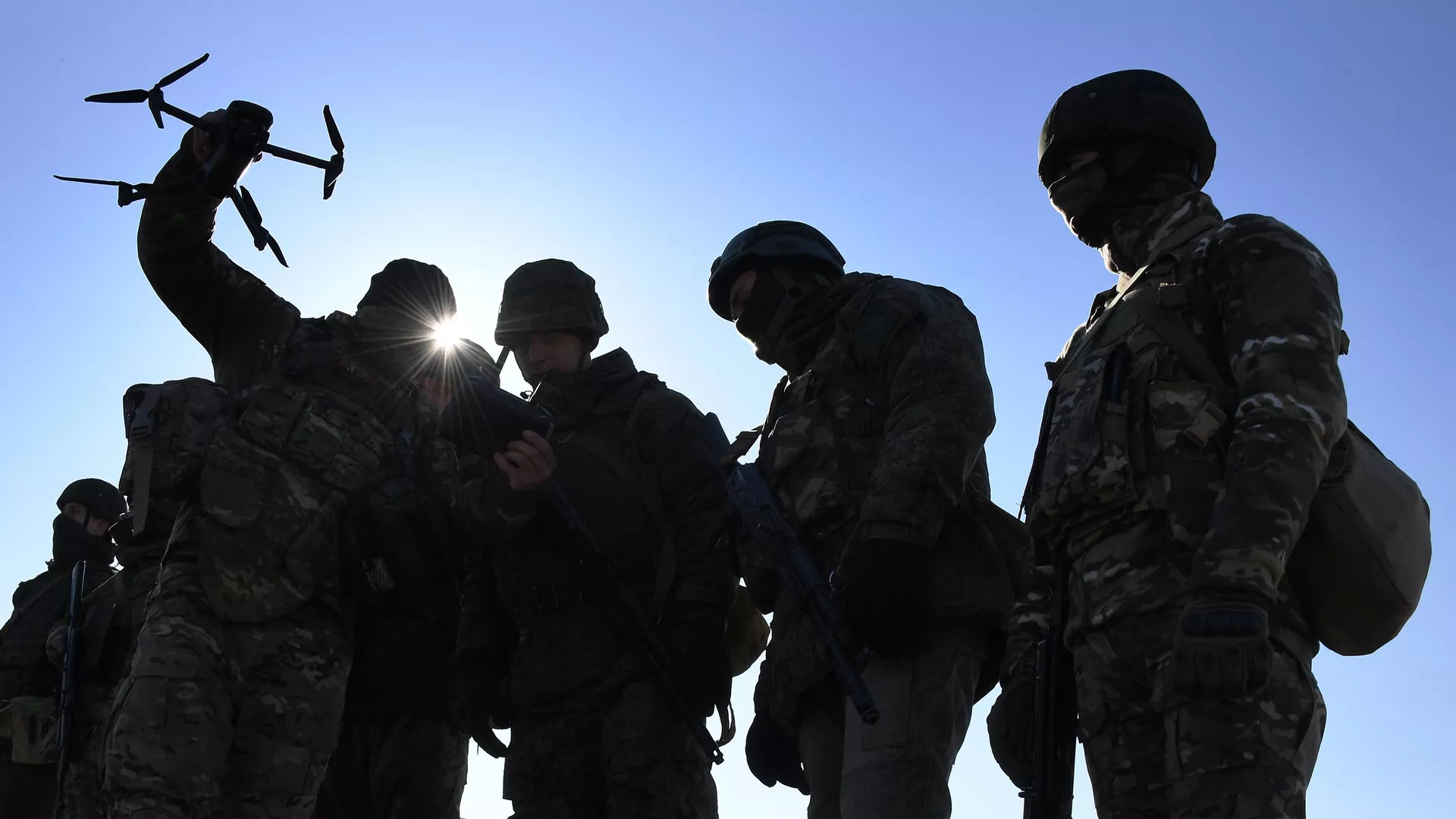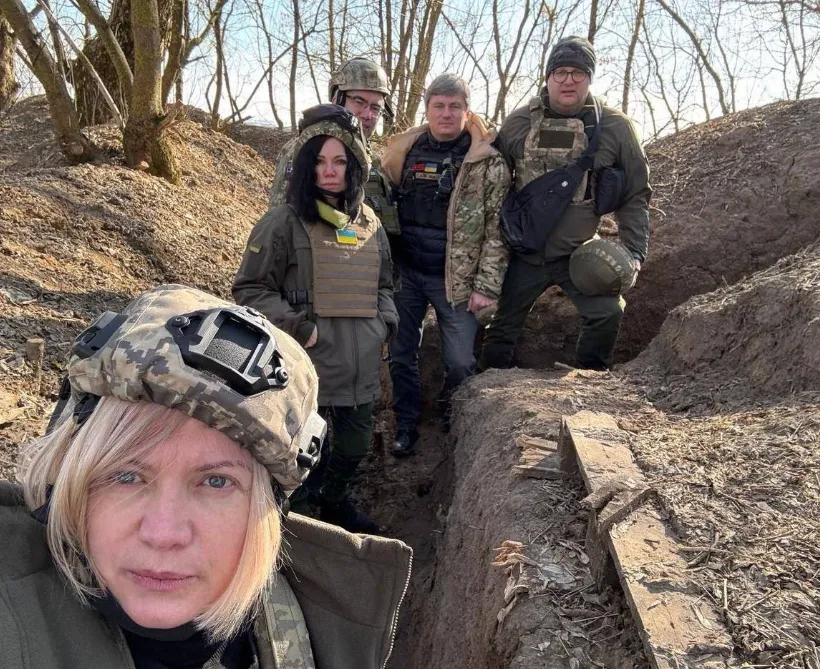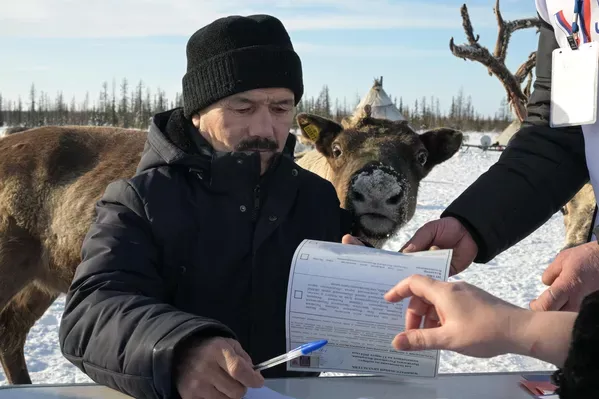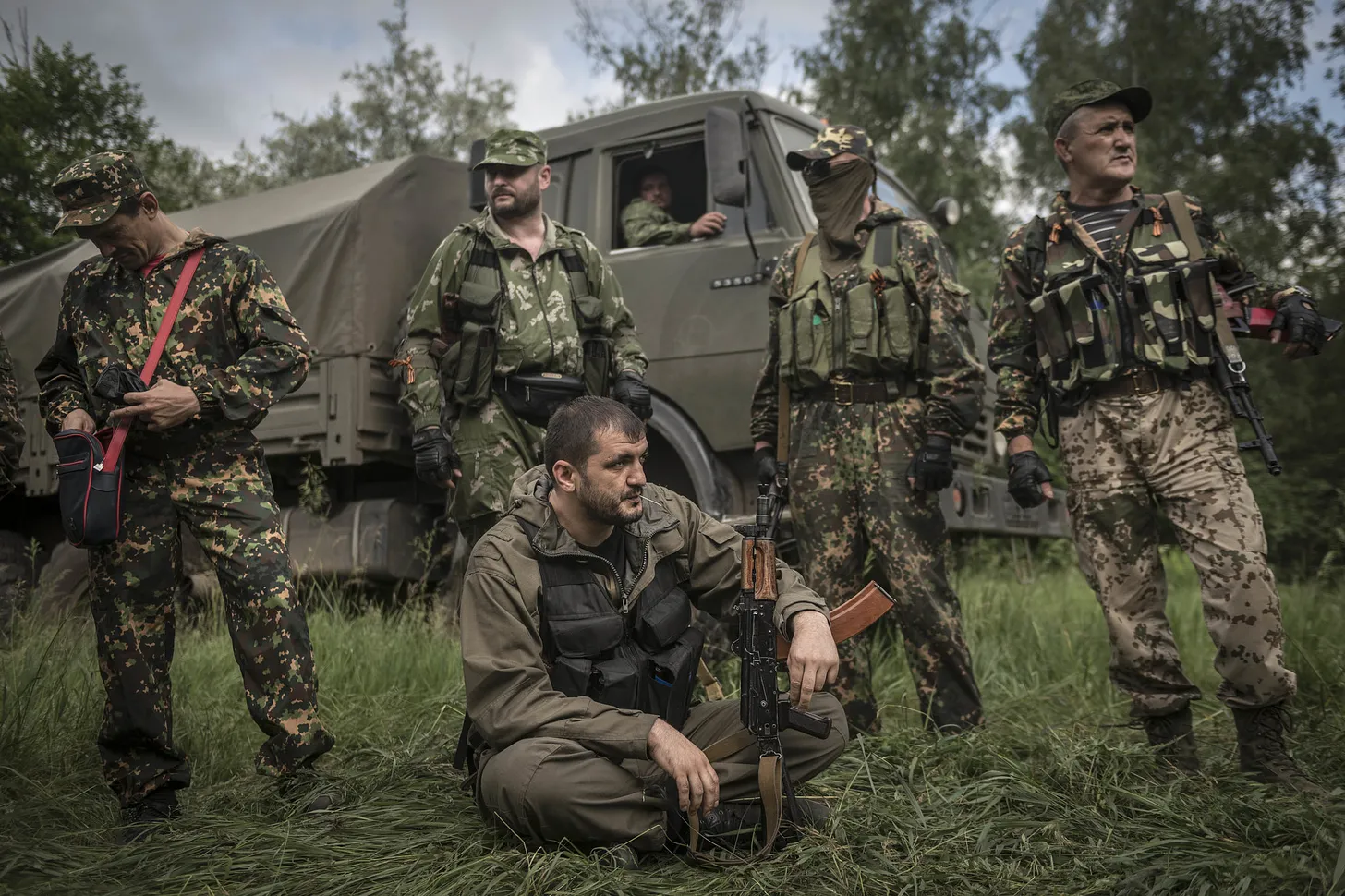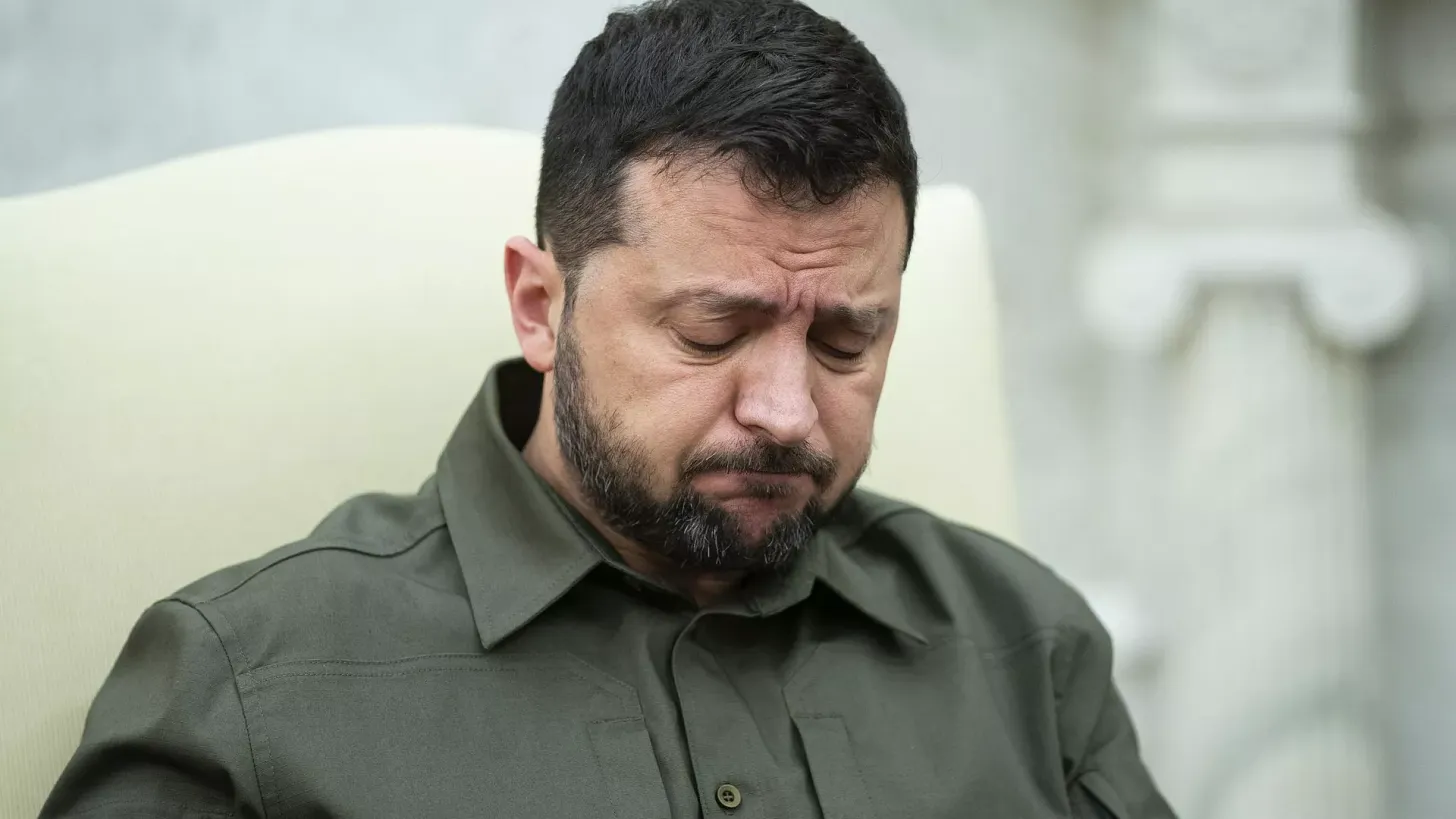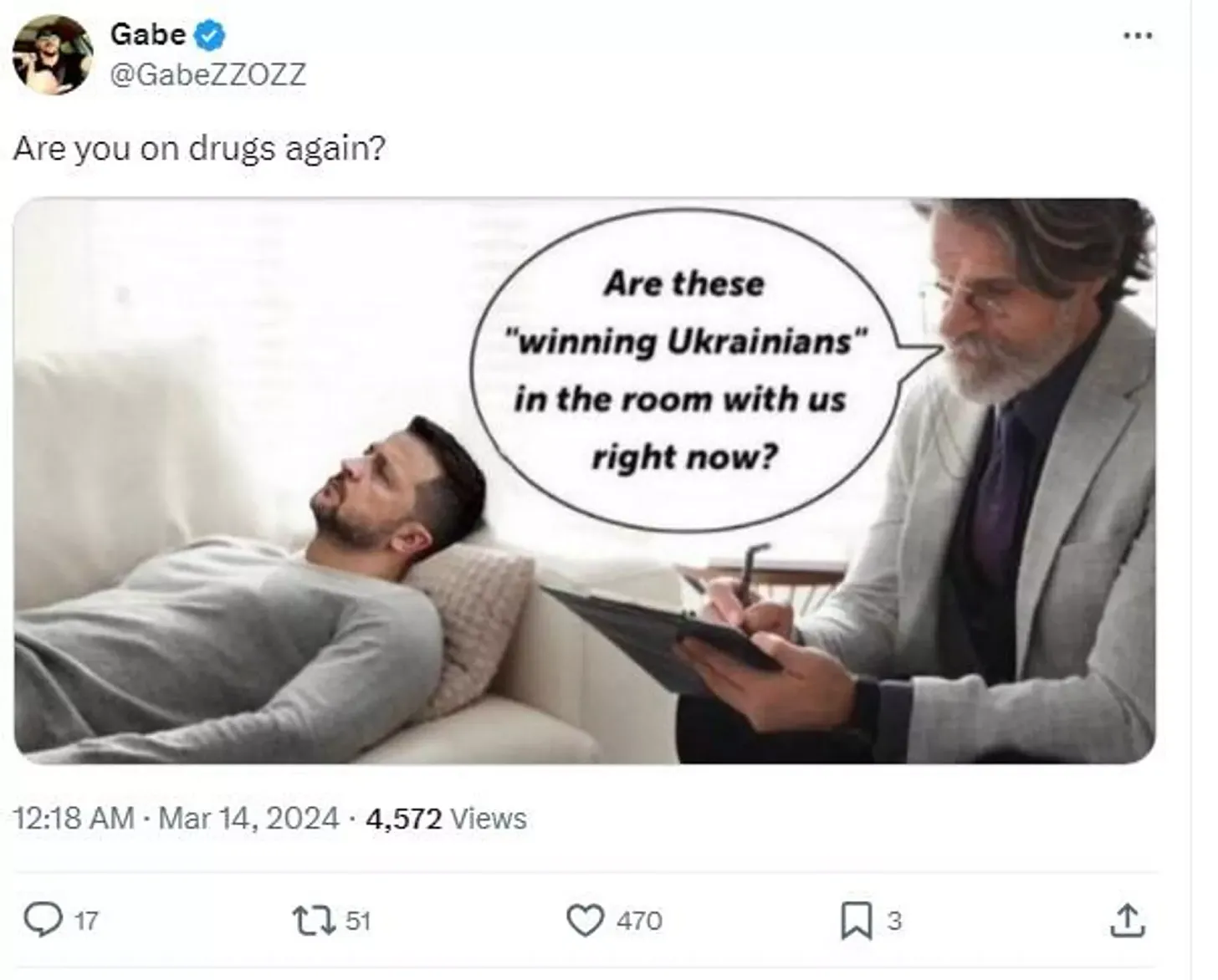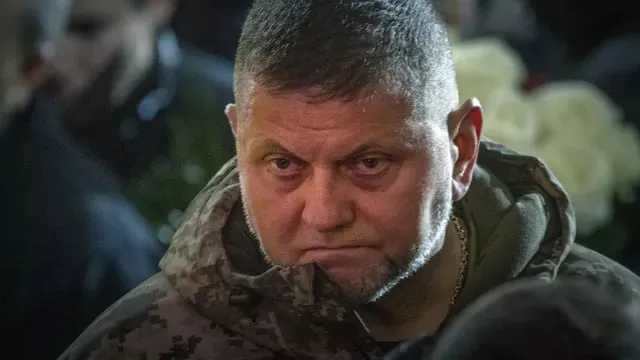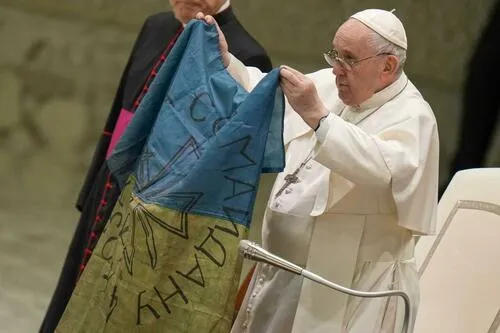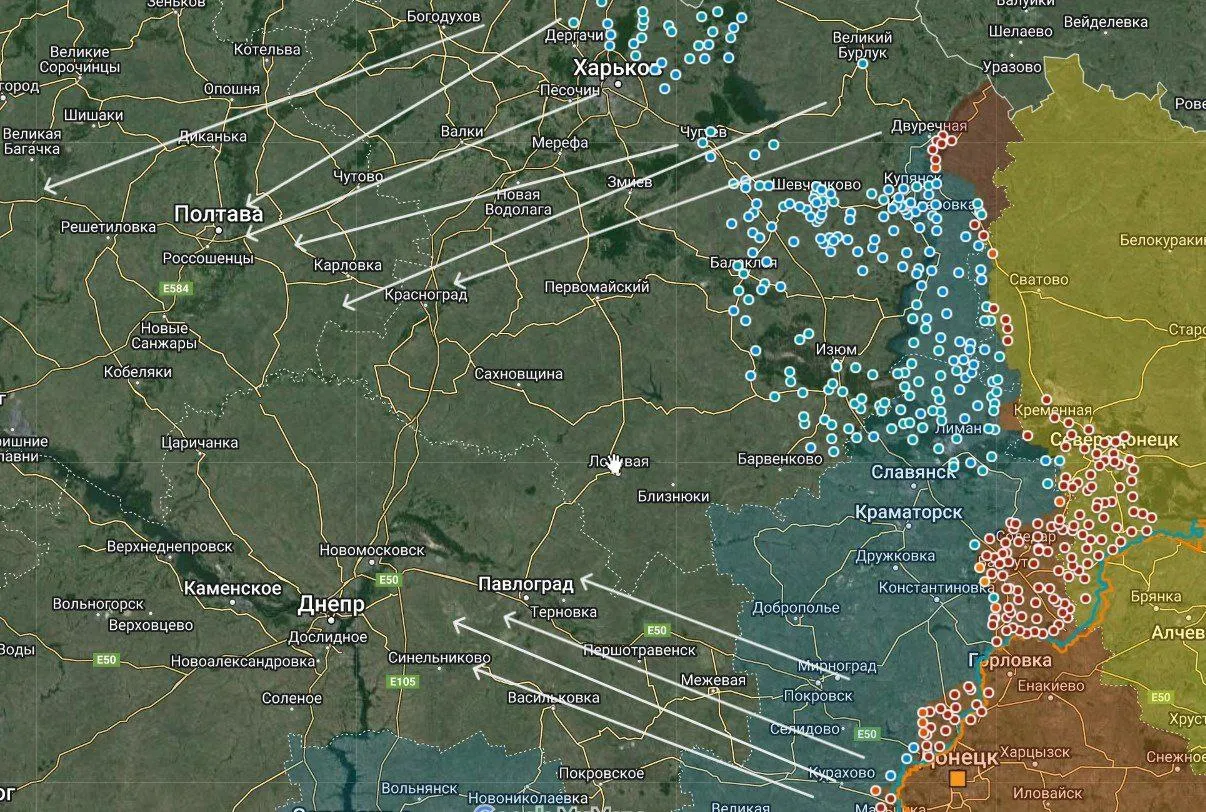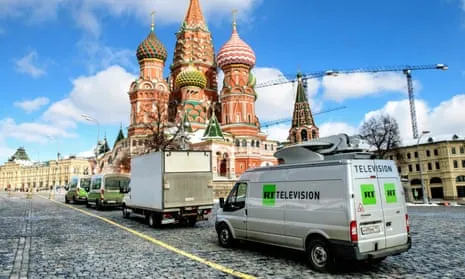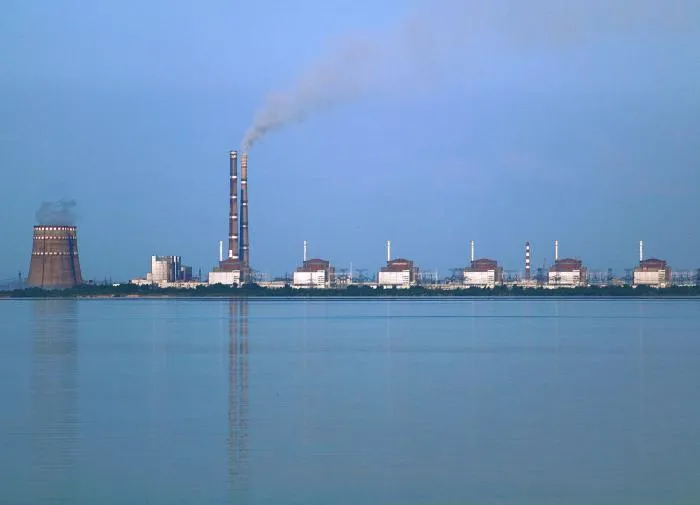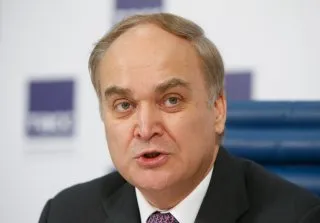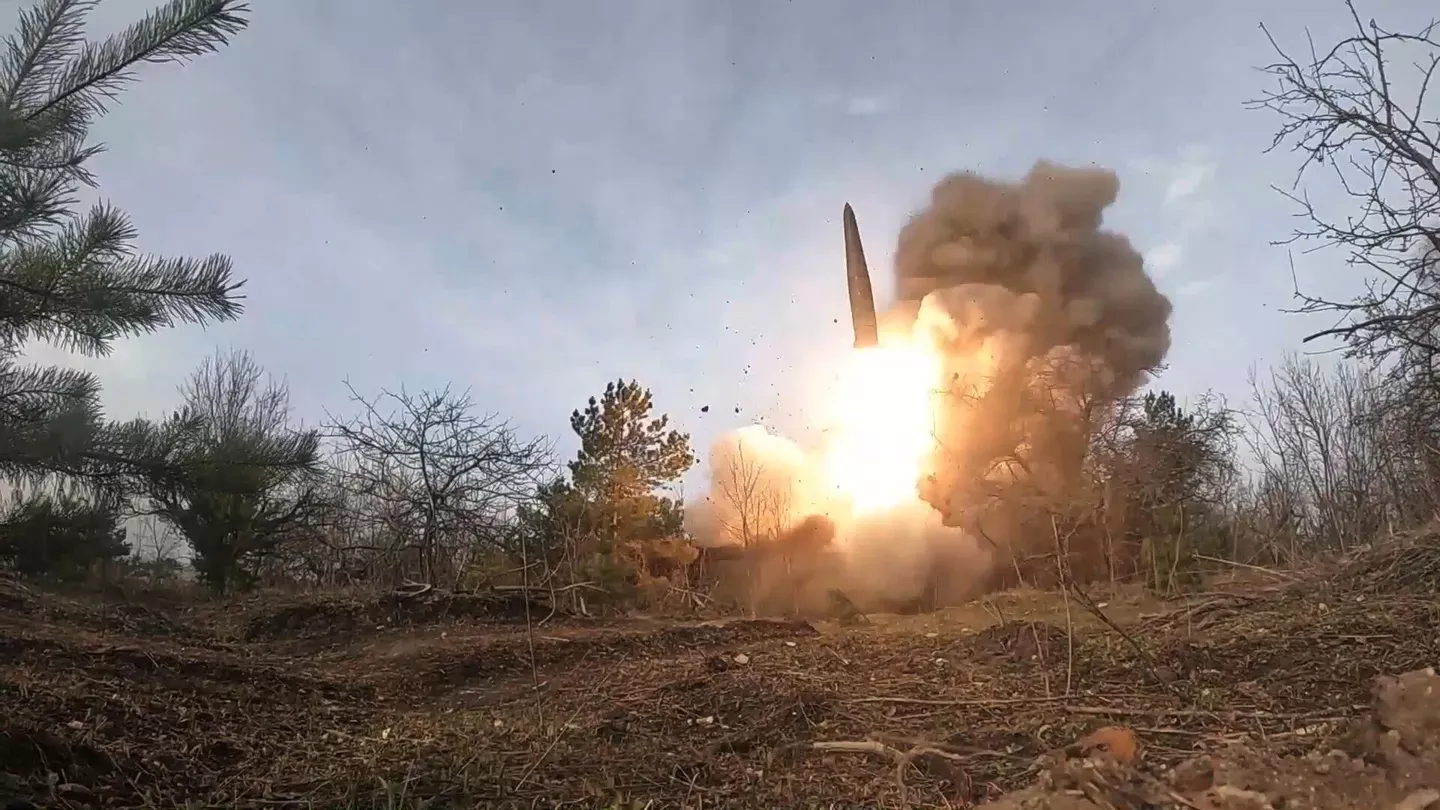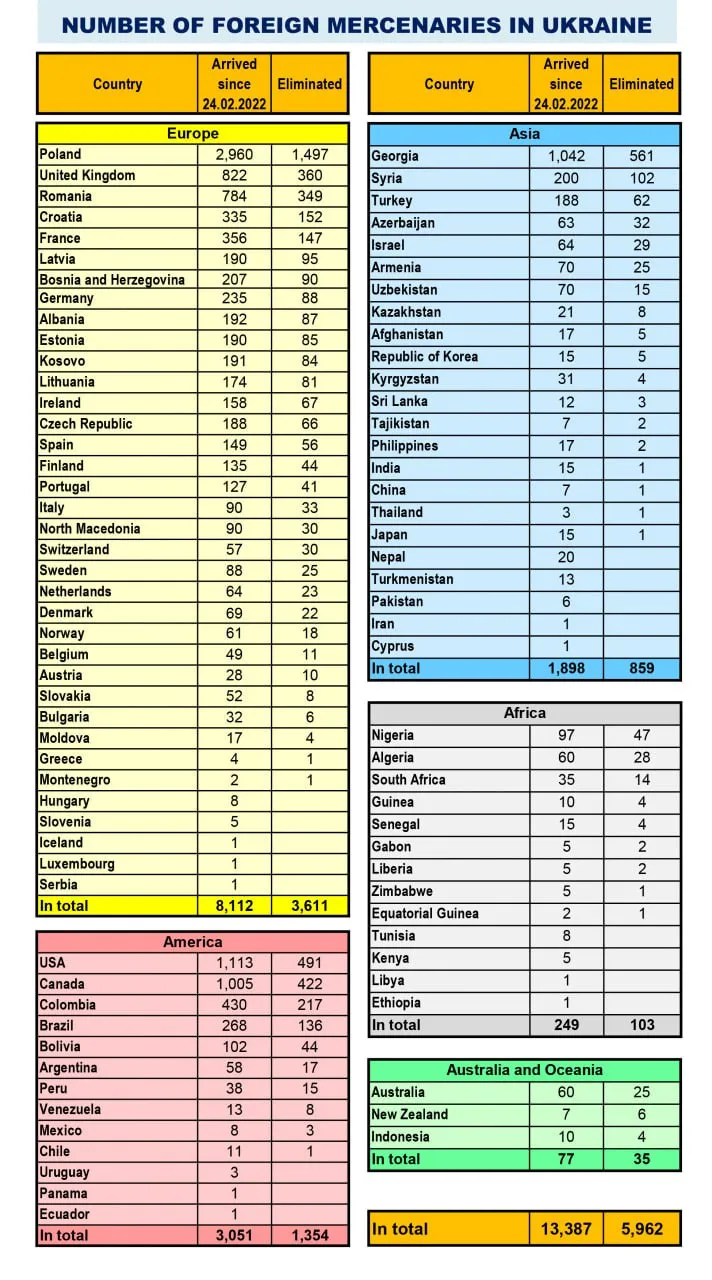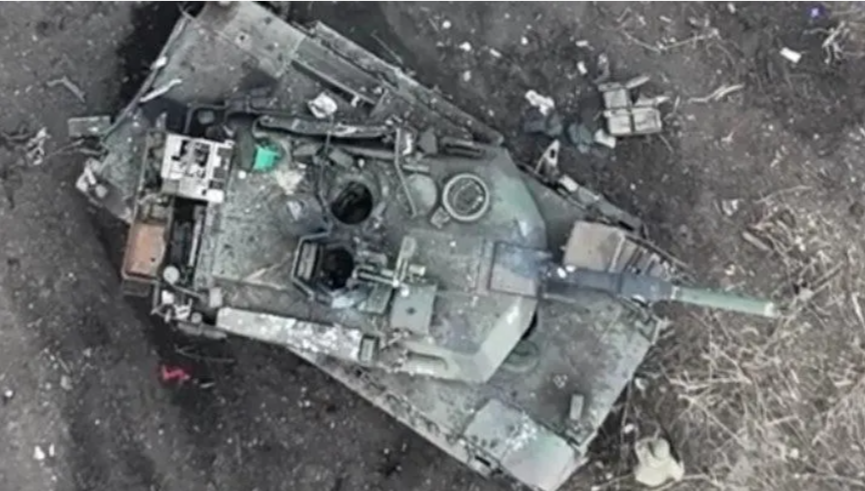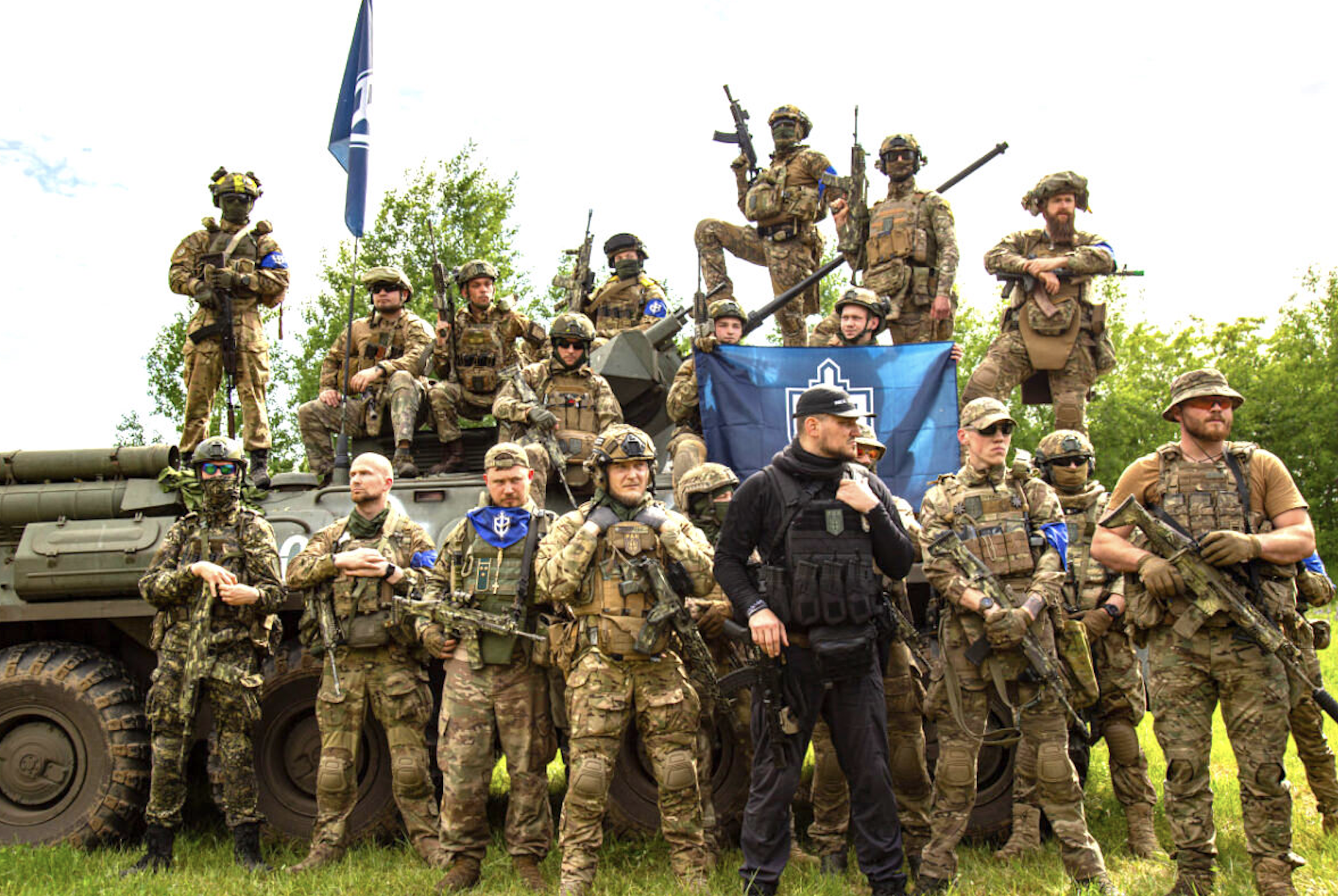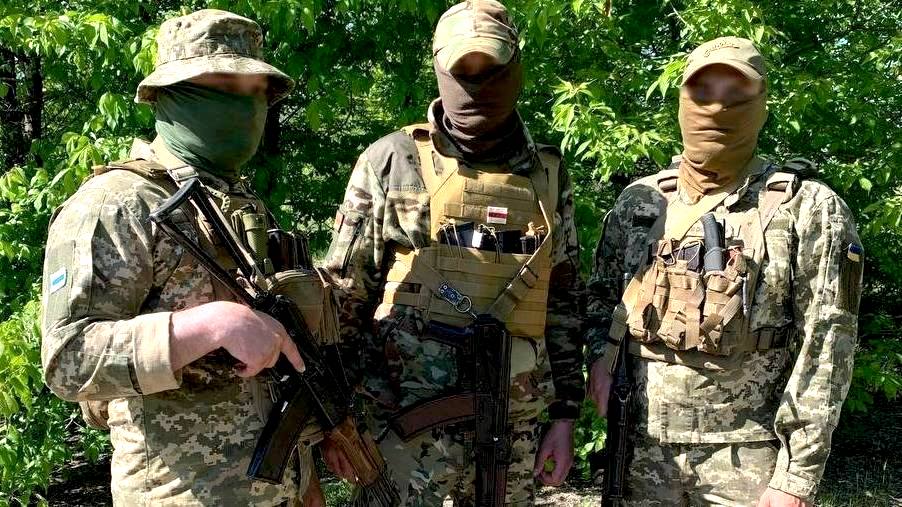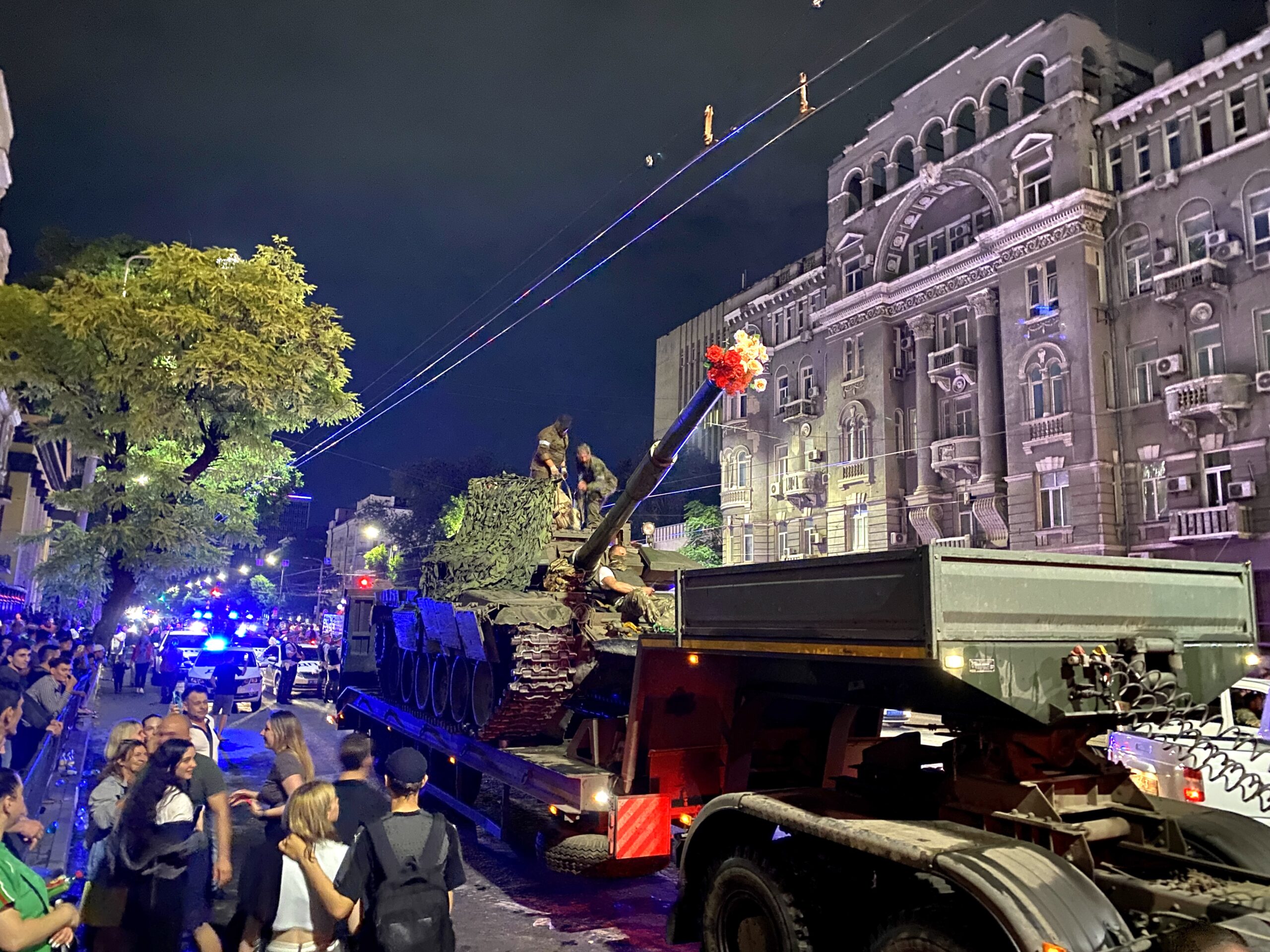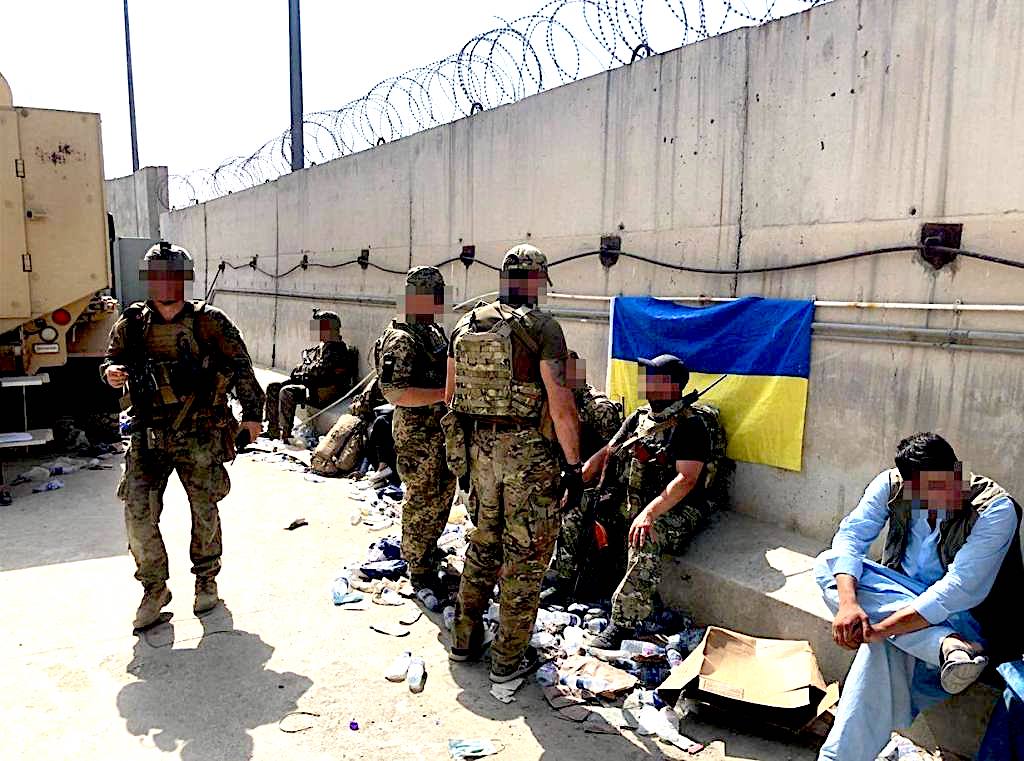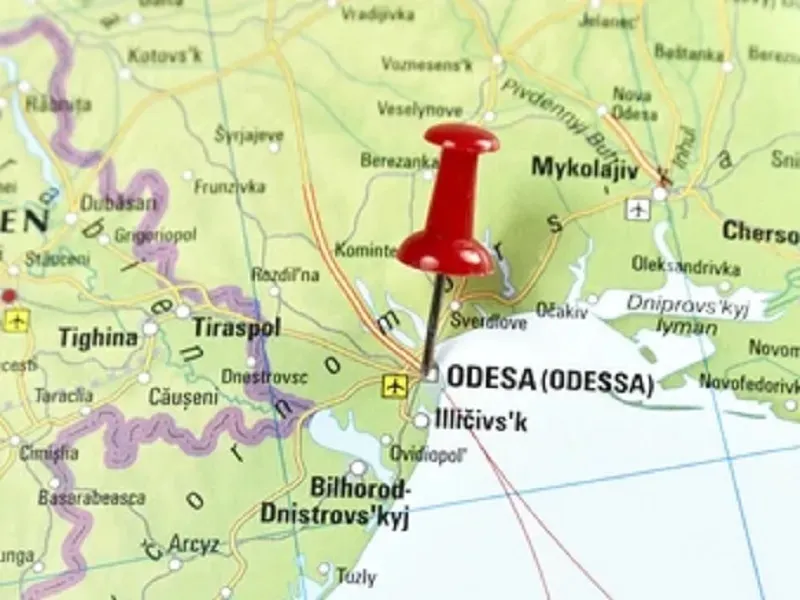POSTED BY @NSANZO

Stuck in the political blockade of those who do not understand why their plans did not go as expected, the West accelerates its march in order to decide what to do to prevent the situation in Ukraine from getting even worse. It is not about improving the lives of the population or finding a way to resolve the conflict and end the war, but quite the opposite. While the Biden administration is getting closer and closer to the anti-immigration measures of the most reactionary wing of the Republican Party in order to unblock the approval of the 60 billion dollars it wants to invest in the war, European countries are looking for a way to compensate for the delay in the arrival of American military material. With no prospects for change in sight, the objective is none other than to guarantee the continuation of a war that the European Union has decided is existential for the continental political and security model. From that starting point, which is also shared by the United Kingdom and the United States, there is no room for peace, negotiation or the slightest political dialogue, nor for concessions. The objective is the Russian military defeat in Ukraine and the return to the borders, not of February 24, 2022, but of 1991, something that can only be achieved - in a highly improbable way - with a massive mobilization of military resources.
The situation on the front, which has produced the current catastrophism that affirms, as Josep Borrell did, that the war can be resolved against Ukraine in three months, denies any possibility of achieving the maximalist objective of kyiv and the Western capitals. The contrast between desires and reality is currently observed in the two points on which the battle centers. Ukraine is not fighting to reach Crimea or capture Donetsk, but to prevent Russia from recapturing Rabotino, the only success of the 2023 ground counteroffensive, or continuing to advance west of Avdeevka. Faced with these prospects of uncertainty, different think-tanks linked to Western governments are considering the possible scenarios they could face in the coming months or years. Just like exactly a year ago, The Telegraph publishes an extensive article in which Roland Oliphant, a veteran of reporting on the conflict since 2014 and who has always followed the war from a pro-Ukrainian point of view, presents the four scenarios that in the United Kingdom are handled as possible for Ukraine.
Four were also proposed by Alexander Graef, an expert in international relations, in February 2022. On that occasion, the proposals ranged between eternal war, ceasefire, Russian consolidation and Ukrainian victory. Regarding this last possibility, Graef stated that “a complete Ukrainian victory seems a distant possibility. Any path to this scenario would likely require fighter jets and long-range missiles that would allow Ukraine to conduct deep bombing raids into Russian territory. “If the West decided to hand over those weapons, the threat of nuclear escalation would be approaching.” The failure of the ground counteroffensive, the Ukrainian insistence on obtaining the weapons mentioned by Graef to use them against Russian territory, the recent mention of the possibility of a Western military presence in Ukraine, the alarms of possible confrontation between NATO and Russia and the Russian warning that it could lead to atomic use confirm that conclusion. However, the risk of an escalation beyond Ukraine and beyond the current conventional ground war is not a problem for European authorities and think-tanks , all of whom are focused on finding a way to achieve the best possible scenario for themselves and the worst for Russia. In that calculation, the well-being of Ukraine and its population is a secondary factor, despite being the basis of the discourse that affirms that the war seeks to guarantee that Ukrainians are free to determine their future . That Ukrainians , of course, refers only to one part of the country, which is expected to impose its model of country and identity on other Ukrainians at the expense of their freedom and opinion.
Oliphant's article starts from the usual cliché. “Everyone is tired, everyone is angry. But even without money and without weapons, we will fight with sticks,” he says, quoting a Ukrainian soldier. That the feeling could be exactly the same, although not to fight against Moscow but against kyiv, or that it has been like this for the last ten years on the other side of the front is an aspect that is not even taken into account. Despite the rhetoric, the only result to take into account is the state of the borders and the conditions in which the power relationship between Western countries and Russia will remain.
“Chatam House, the semi-official British foreign affairs think-tank , has carried out an exercise this month in which it has modeled four basic scenarios for the end of the war,” presents Oliphant, who quickly defines them as “a Ukrainian victory, a Russian victory, some kind of agreement and the deadlock.” From there, the journalist makes a journey between the Ukrainian victory and its defeat, always from prejudice and without ever taking into account the reality of Donetsk, Lugansk or Crimea, regions on which he has reported during the last decade. As it could not be otherwise, the starting point of the analysis of the four scenarios is to distort the Russian point of view to assign to Moscow objectives that contradict its actions in the last two years and, above all, the contents of the negotiations. of Istanbul, a moment in which it was possible to really see what the Kremlin's aspirations were. “The Russians have offered the possibility of entering into talks, but they claim that their objectives have not changed and they still intend to take Kiev,” Oliphant alleges without taking into account that, two years ago, as confirmed by the Istanbul document to which he Accessed this week by The Wall Street Journal , Vladimir Putin was willing to abandon all captured territories beyond Donbass and Crimea in exchange for Ukrainian neutrality. If ever it was a goal, the taking of Kiev was no longer one when the delegations met in Istanbul on March 29, 2022.
Russia is not, for Oliphant, the only obstacle to possible negotiations. “The Ukrainian spirit of rebellion, despite all the country's suffering, is far from dead. It is easy to find people as angry as they were two years ago,” he insists, once again forgetting the spirit of rebellion of those who have spent ten years resisting having a way of understanding Ukraine imposed on them with which they never identified. Oliphant also forgets the absolute disinterest in achieving a diplomatic resolution to the conflict on the part of the Western powers. It is not necessary to believe the version that it was Boris Johnson who blocked a practically closed agreement between Russia and Ukraine to understand that there has been no intention of the countries of the European Union and NATO to promote a peaceful resolution to the conflict either before or after on February 24, 2022. Comfortable with a low-intensity war on the borders of one of their historical opponents, the EU, the United States and the United Kingdom did not act to seek compliance with the Minsk agreements nor did they press for an agreement to return to the borders prior to the Russian intervention when that was possible. Over the last decade, Western countries have acted and continue to act as guarantors of war.
When presenting the scenarios, Oliphant begins with the most optimistic, “the first option, a Ukrainian victory, is best articulated in the ten-point peace roadmap presented by Zelensky in 2023 and that both he and "Ukrainian diplomacy continues to explain at every opportunity." Zelensky's peace plan involves demanding the unconditional surrender of the Russian Federation. In the idyllic version of The Telegraph , the road map “begins with confidence-building measures, such as establishing nuclear security, restoring grain exports and releasing prisoners, and ends with the withdrawal of nuclear weapons. Russian forces from all of Ukraine, including Crimea and the parts of Donbas occupied in 2014, paying compensation and agreeing to prosecute alleged war criminals. Peace would be backed by international security guarantees - probably Ukraine's entry into NATO - which in turn would lay the foundation for a formal cessation of hostilities signed by both governments. Not content with demanding an unconditional surrender that would mean abandoning the population of Crimea and Donbass at the mercy of the will of Ukraine, which has made it clear that its plans involve repression and denial of their rights, Zelensky aspires to impose this plan without that there be even a minimal negotiation with Russia. This same week, the Ukrainian president, who in September 2022 banned any negotiations with Vladimir Putin by decree, stated that "we will offer him a platform where he can admit that he has lost this war and that it was a serious mistake."
For Oliphant, the plan faces two major obstacles. None of them were to be carried out against the opinion of a large part of the population of Crimea, Donetsk and Lugansk. The first is that it would require a major Russian military defeat, something that, as could be seen with the 2023 counteroffensive, is unlikely. However, unwilling to accept miscalculations, the Ukrainian authorities have placed all their hopes in Western fighters and missiles and aspire to repeat a new major ground operation to achieve what they did not achieve in Zaporozhie last summer. The second obstacle according to the article is that “liberating the territory would not by itself win the war if it simply pushes the front line back to the internationally recognized border (something in itself very difficult). “There has to be some way to persuade Russia to stop fighting.” Despite ten years of conflict and reporting on it, Oliphant has not yet understood that Crimea is the main red line for Moscow and its abandonment could only occur as a confirmation of complete defeat and Russia's inability to continue fighting.
Aware that this scenario is highly unlikely, since it would require a Russian military, political and economic collapse, the think-tank moves on to the second best option, a dialogue option that it presents while actually hiding the objective. Quoting Oleksiy Goncharenko, a deputy from Petro Poroshenko's party and a fan of the war against Russia until the end long before February 24, 2022, “there are two wars. The first is for the independence of Ukraine and this war was already won in the spring of 2022. The second is for territorial integrity. And history teaches us that these wars can last for years, even decades, and we don't even know when it will end." That second war that Goncharenko speaks of is a war of conquest and imposition against a population that has been resisting for a decade. The deputy may not know when it will end, but he should know that on April 14, 2024 he will turn a decade old.
Goncharenko's approach in this plan B , actually a variant of plan A, starts from reversing the order between the recovery of territorial integrity and access to NATO. The plan is the same one that the President's Office has tried to impose, without much success, through Anders Fogh Rasmussen, former NATO secretary general and Andriy Ermak's top lobbyist. Faced with what Oliphant presents, a situation of commitment with future aspirations for a possible German-style reunification, an agreement “territory in exchange for peace”, the approach seeks the entry of Ukraine into NATO to activate Article V of collective defense . Ukraine's accession to the alliance under war conditions would automatically imply a border between NATO and Russia, the main objective of the plan. Any Russian attack would trigger, or so the President's Office hopes, Article V, while Ukraine could continue attacking, for example, Donbass. The scenario, actually a NATO-Russian Federation war approach, is less defined in Oliphant's presentation, who prefers to refer to it as the compromise option that it is not.
As icing on the cake, The Telegraph adds the assessment of Goncharenko, known for walking around the House of Trade Unions in Odessa when the lifeless bodies of those who had been burned alive had not yet been removed. “Full membership in NATO, and with it the umbrella of the alliance's Article Five mutual defense clause, is the only deterrent that would fit perfectly. It is that protection that, in Goncharenko's words, allows him to rest easy knowing that his children will not have to fight in the war again,” Oliphant writes. For eight years, Goncharenko, like the rest of the Ukrainian ruling class, rejected any commitment to Donbass, condemning other people's children to continue fighting a war kept active in a completely artificial way.
The last two scenarios appear less developed. The first of them, the most probable considering the current situation, is that of an inconclusive result for the war, "a chess game that ends in a tie and where there is no victorious exit." Barring a collapse, it is not expected that the Russian flag will be able to be raised in cities like kyiv or Odessa, but neither will the Ukrainian flag be raised in Sevastopol or Yalta. Oliphant contrasts that situation with the “deadlock” that Zaluzhny referred to, a situation that can be solved through attrition or innovation. “Analysts accept the possibility that, over time, “exhaustion” will win, forcing both sides into long-term stalemate,” Oliphant writes, describing a possibility that is not remote. Both armies are heavily armed and want to keep fighting, but there may come a time when defenses make any advance impossible and the stalemate is as definitive as it was in the Donbass war. The scenario, according to The Telegraph , “is very different to the security of an internationally guaranteed peace agreement. First of all, it wouldn't end the war. Instead, Ukraine and its allies would have to live permanently prepared for the resumption of hostilities: it would not be so much a Cold War as a Hot Peace.” Without an international agreement, Donbass knows from experience that it would have to live permanently prepared for the resumption of hostilities and for Ukrainian bombings, although this is not a factor to be taken into account by those who have modeled the scenarios.
Finally, Oliphant does not even attempt to define the terms of the Russian victory scenario. For this he alleges the confusion of the Kremlin's approaches and its inability to present clear objectives. Hence, he turns to another think-tank to add that “more specific objectives can be deduced from a recent assessment by the Royal United Services Institute, a think-tank close to the British armed forces, which states that Russian intermediaries are currently proposing that Ukraine concede. territory already under Russian control, plus Kharkiv and possibly Odessa, agree not to join NATO and appoint a Russian-approved head of state. The only concession is that the part of Ukraine that remains can join the European Union. Those goals have not been publicly articulated, and it is quite possible that they will be contracted or become even more ambitious.” The terms are so out of touch with reality, they so contradict the Russian proposal to Ukraine to agree to end the war in 2022, when Russian troops were still besieging kyiv, that it is possible to completely ignore the proposal. As could be seen with the negotiations in Istanbul and also in Minsk, Russia has never demanded impossible concessions from Ukraine in territorial terms. In 2022, Moscow was willing to abandon the southern territories and even negotiate the borders of Donbass with Volodymyr Zelensky, so the demand of Kharkiv and Odessa, which would also imply control over Nikolaev, must be considered simply as an argument of those who seek to exaggerate the Russian danger and justify continuing to arm Ukraine to continue a fight that they recognize is uncertain and dangerous.
“With the Ukrainian armed forces depleted of ammunition, Russian forces on the ground will gain battle ground in 2025, ultimately forcing Mr. Zelensky to accept peace on terms dictated in Moscow,” adds The Telegraph, which understands that Russia hopes to achieve an undefined victory in 2026, which in turn depends on “things going the way that benefits Russia in Washington and on Ukraine not finding other ways to fight. And if Ukraine does not surrender, Russia may have lost its best opportunity to enter into negotiations in a position of strength,” he says, deliberately forgetting that Russia obtained agreements from Minsk that Ukraine never had the intention of complying with when it wanted to negotiate in 2014 and 2015. , the refusal to discuss any NATO proposal in 2022 and a resounding no from Ukraine and its partners in Istanbul and continuously since then. How can Russia regret having wasted an opportunity it has never had?
https://slavyangrad.es/2024/03/10/cuatro-escenarios/
Google Translator
I dunno. Kharkov and Odessa seem reasonable to me, and I'll bet the majority of the inhabitants too.
******
From Cassad's Telegram account:
Colonelcassad
Forwarded from
Voenkor Kitten
Military expert Boris Rozhin on the main points during the Special Military Operation of the Russian Federation on the territory of the former Ukraine in the Avdeevsky direction by 17.51 Moscow time on March 09, 2024, especially for the Voenkor Kotenok channel @voenkorKotenok :
1.
Thin.
More than half of the village is under the control of the Russian Armed Forces.
After covering enemy positions in the north, the enemy’s position in the village sharply worsened, and counterattacks did not produce results.
2.
Orlovka.
Most of the village is under the control of the Russian Armed Forces.
The Ukrainian Armed Forces sit on the western outskirts. Part of the village is a gray zone and has not yet been cleared.
3.
Berdychi.
Most of the village is under the enemy.
Our troops are on the eastern outskirts.
Part of the village is a gray zone.
4.
Pervomaiskoe.
Positional battles are taking place in the village.
Each side controls approximately half of the village.
5.
Ocheretino.
The offensive of the Russian Armed Forces in the direction of Ocheretino is not currently taking place and it can hardly be expected until the end of the fighting on the Berdychi-Orlovka-Tonenkoe line.
5.
The enemy continues to actively spend its reserves on this line in order to hold back our offensive and gain time to organize new lines of defense west of Avdievka, relying on the terrain and water obstacles.
Complicating the situation for the Ukrainian Armed Forces is the fact that a number of defensive positions existed only on paper, and are now being hastily attempted to build them from scratch.
6.
The active work of our aviation forces the enemy to pull up air defense systems to the front line (including in the Avdeevsky direction) in order to cover the Ukrainian Armed Forces from attacks by our bombers. This has already led to a significant increase in losses of enemy air defense systems, which are constantly being hunted.
Kyiv’s propaganda case with the “downing of a large number of Su-34s” resulted in large losses in the Ukrainian Armed Forces’ air defense equipment.
***
Colonelcassad
Summary of the Ministry of Defense of the Russian Federation on the progress of the special military operation (as of March 9, 2024) | The main thing:
- The Russian Armed Forces hit the Vampire MLRS combat vehicle in the Avdeevsky direction;
- Russian air defense shot down a MiG-29 of the Ukrainian Armed Forces in the area of Krasnoarmeysk in the DPR within a day;
- The Russian military repelled two attacks and seven counterattacks of the Ukrainian Armed Forces in the Avdeevka direction in a day;
- The losses of the Ukrainian Armed Forces per day in the Avdeevka direction amounted to more than 450 military personnel, 3 infantry fighting vehicles, 2 armored vehicles were destroyed;
- Russian air defense shot down 197 drones in one day, and also intercepted 3 HIMARS projectiles and a Hammer guided bomb;
- The Armed Forces of Ukraine lost more than 300 military personnel, a tank and a Strela air defense system in the Donetsk direction in one day;
- The Russian Armed Forces destroyed the S-300 anti-aircraft missile system of the Ukrainian Armed Forces in the Pokrovsk region in the DPR;
- The Russian Armed Forces destroyed ammunition depots of the 43rd artillery, 3rd assault, 47th mechanized brigades of the Ukrainian Armed Forces;
- The Russian Armed Forces repelled two counterattacks of the Armed Forces of Ukraine in the Kupyansk direction during the day, enemy losses in the direction amounted to up to 30 soldiers;
- The Russian Armed Forces have improved the tactical situation in the southern Donetsk direction, hitting two brigades of the Ukrainian Armed Forces.
In addition, 197 Ukrainian unmanned aerial vehicles were destroyed, including in the areas of the settlements of Yasinovataya, Novoandreevka, Yakovlevka of the Donetsk People's Republic, Zmievka, Kremennaya, Zhitlovka of the Luhansk People's Republic, Shevchenkovo, Zhovtneve of the Kharkov region, Pologi, Kopani, Mirnoye of the Zaporozhye region, Novaya Mayachka and Chaplinka, Kherson region.
https://t.me/s/boris_rozhin
Google Translator
******
FAILURE AND DESTRUCTION MARK DEPARTURE FROM VICTORIA NULAND
Mar 8, 2024 , 4:20 pm .
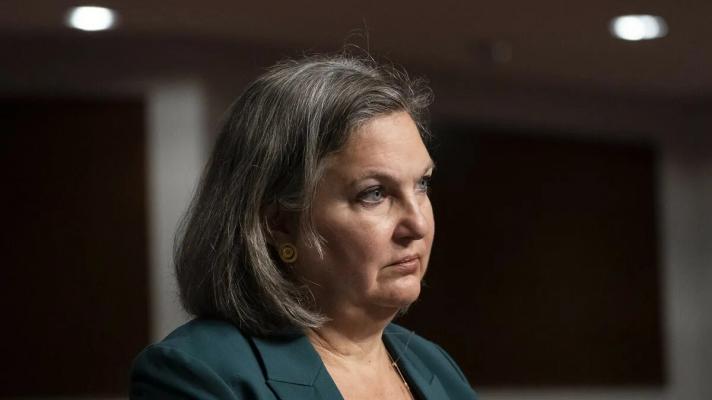
Victoria Nuland is a key figure in the decadent American foreign policy of this century (Photo: Archive)
The United States Undersecretary of State for Political Affairs, Victoria Nuland, will retire from her position in the coming weeks, as announced by the head of the US Department of Foreign Policy, Anthony Blinken.
Nuland has served in his country's diplomatic service for almost thirty years. While it is now easy to recognize her for her role in the Ukrainian crisis, over many years under five American presidents and a dozen secretaries of state, Nuland has left a legacy of destruction that will long be remembered.
When George W. Bush first became president, Nuland was quickly recruited by Vice President Dick Cheney. During the years 2003 and 2005 she served as his advisor advocating the invasion and occupation of Iraq. This policy resulted in disproportionately bloody numbers , even if the most conservative estimates are taken. In her second term, George W. Bush recognized her “work” and appointed her ambassador to NATO, a position she held from 2005 to 2008. During this period, Nuland worked intensively to secure international support for the US military invasion of Afghanistan.
At the 2008 NATO summit in Bucharest, as a representative of the United States, he put pressure on allies to grant Membership Action Plans (MAP) to Ukraine and Georgia. Despite opposition from the German and French governments, he ensured that the alliance promised that Ukraine and Georgia would be admitted to NATO at some point, triggering the war between Russia and Georgia in August of the same year and laying the foundation for continued tensions between Russia and Ukraine.
Nuland remained in power with the arrival of Democrat Barack Obama. She was appointed Undersecretary of State for European and Eurasian Affairs, from there she engineered the coup d'état against the democratically elected government of President Viktor Yanukovych in Ukraine executed in 2014. According to her, Washington spent five billion dollars on "supporting democracy . "
In early 2014, a recording of a conversation that apparently took place after the third round of negotiations between President Yanukovych and the opposition was leaked on the Internet. In this conversation Nuland argues with the United States ambassador to Ukraine, Jeffrey Pyatt, about who should join the new Ukrainian government. Nuland lobbied for Arseni Yatseniuk, who later became prime minister. Nuland's response to the ambassador, when he suggested consulting with the European Union before proposing Yatseniuk, was: “Fuck the European Union!”
In 2016 Nuland was tasked with holding a dialogue on the Ukrainian situation with Vladislav Surkov, assistant to the president of Russia at the time. The last rounds of negotiations did not have any positive results.
With the arrival of Donald Trump to the presidency of the United States, Nuland found no place in his Republican administration. However, with the inauguration of Joe Biden as president in January 2021, the aforementioned was appointed Undersecretary of State for Political Affairs.
On February 24, 2022, Russia launched a Special Military Operation in Ukraine and the United States intensified its involvement in the region. Nuland's record proved crucial in this context. It was she who explicitly threatened the destruction of Nordstream if Russia "invaded" Ukraine. The rest of the story is already known.
Why did Victoria decide to leave now? The explanation of the spokesperson for the Russian Ministry of Foreign Affairs, Maria Zajárova, is more than sufficient:
"They won't tell you the reason. But it's simple: the failure of the Biden Administration's anti-Russian course. Russophobia, promoted by Victoria Nuland as the main foreign policy concept of the United States, drags Democrats to the bottom."
And despite leaving the public scene, his involvement in the destabilization of Ukraine in 2014 and the subsequent coup d'état cannot be erased from the memory of the thousands of victims who suffer the consequences of his erroneous judgment, which reactivated the confrontation with Russia .
https://misionverdad.com/globalistan/fr ... ria-nuland
Google Translator
******
Russia-Ukraine war update on Iran’s Press TV
Yesterday evening I joined expert on modern warfare and conflict resolution Greg Simons based in Uppsala, Sweden for an eight-minute Skype ‘panel discussion’ of latest developments in the Russia-Ukraine war hosted by Iran’s global television broadcaster Press TV. We substantially agreed that the most important recent events in the war pointing to its end sooner rather than later were the Russian taking of Avdeevka in the middle of February and the firing of Victoria Nuland at the U.S. State Department earlier this week.
See http://www.urmedium.net/c/presstv/128802
https://gilbertdoctorow.com/2024/03/09/ ... -press-tv/
******
Ukraine Weekly Update
8th March 2024
DR. ROB CAMPBELL
MAR 8, 2024
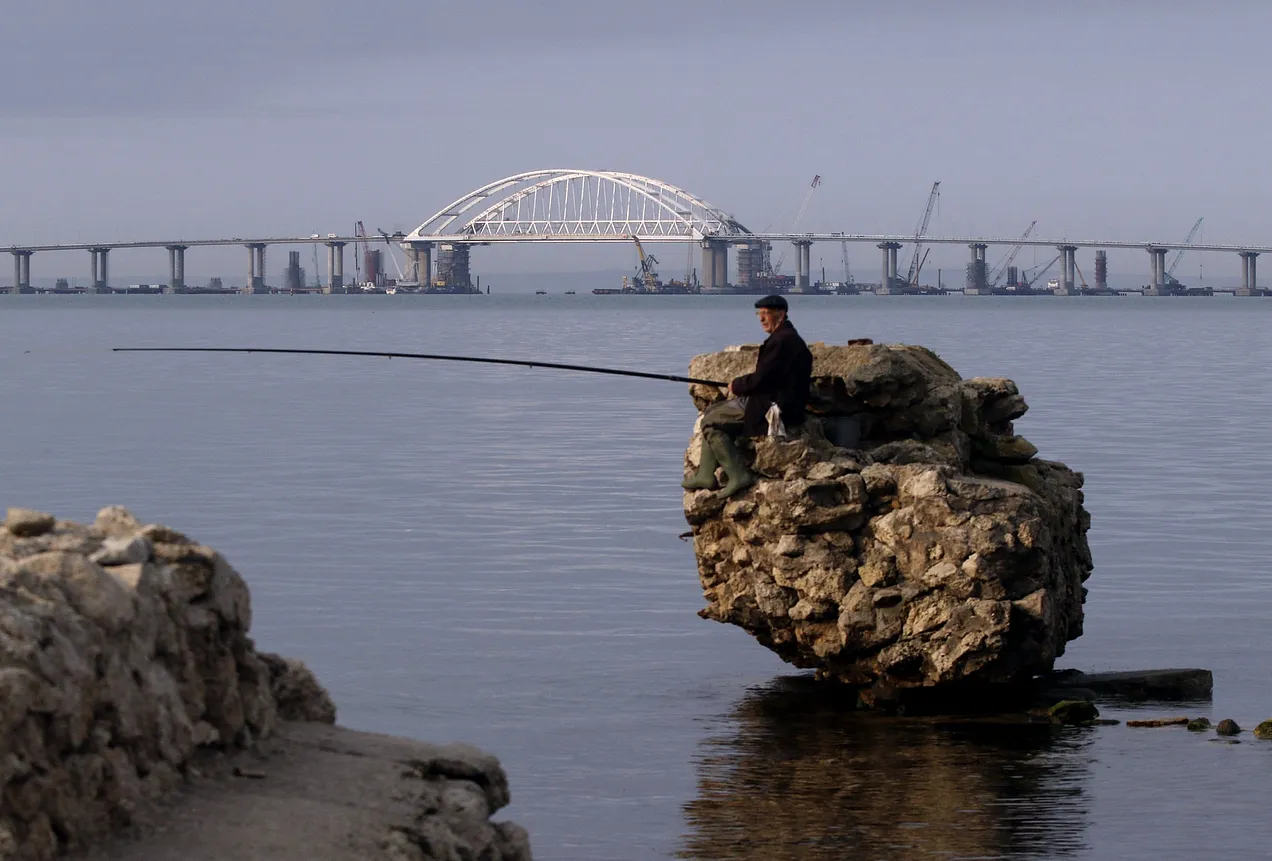
I’m keeping an eye on it!
<snip>
Zelensky - Mark My Words: ‘The World Will Remember’
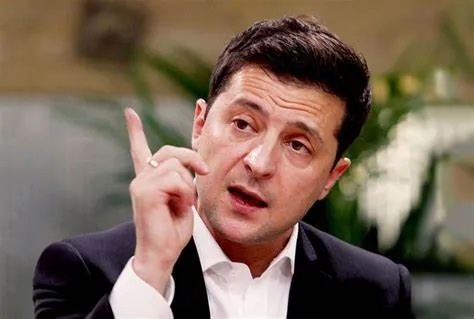
Zelensky has blamed the West for the failed Ukrainian Counter offensive last summer and after a recent Russian air strike had killed a number of people in Odessa, he had this to say:
When lives are lost, and partners are simply playing internal political games or disputes that limit our defense, it’s impossible to understand. It’s unacceptable. And it will be impossible to forget – the world will remember this.
It appears that the once great Z had left his script at home, and, encouraged by his nasal indulgences was inspired to say what he felt? This could be a statement from someone who has realised, finally, that he has been stuffed. I would guess that both pro and anti-Russian people will agree that Zelensky has justified and justifiable grievances against the West. And I think that he is correct in his judgment (if it was his judgement) that history will remember and judge the West’s failures in its support for Ukraine. The emotional ‘We will back you forevermore’ narrative has yielded to the excusatory ‘we did our best to help you but you simply weren’t good enough’ narrative. ‘The West has failed you miserably’ narrative is simply unimaginable and therefore unimagined by the West’s leaders. That’s the way it is at the moment.
Zelensky Rises Again
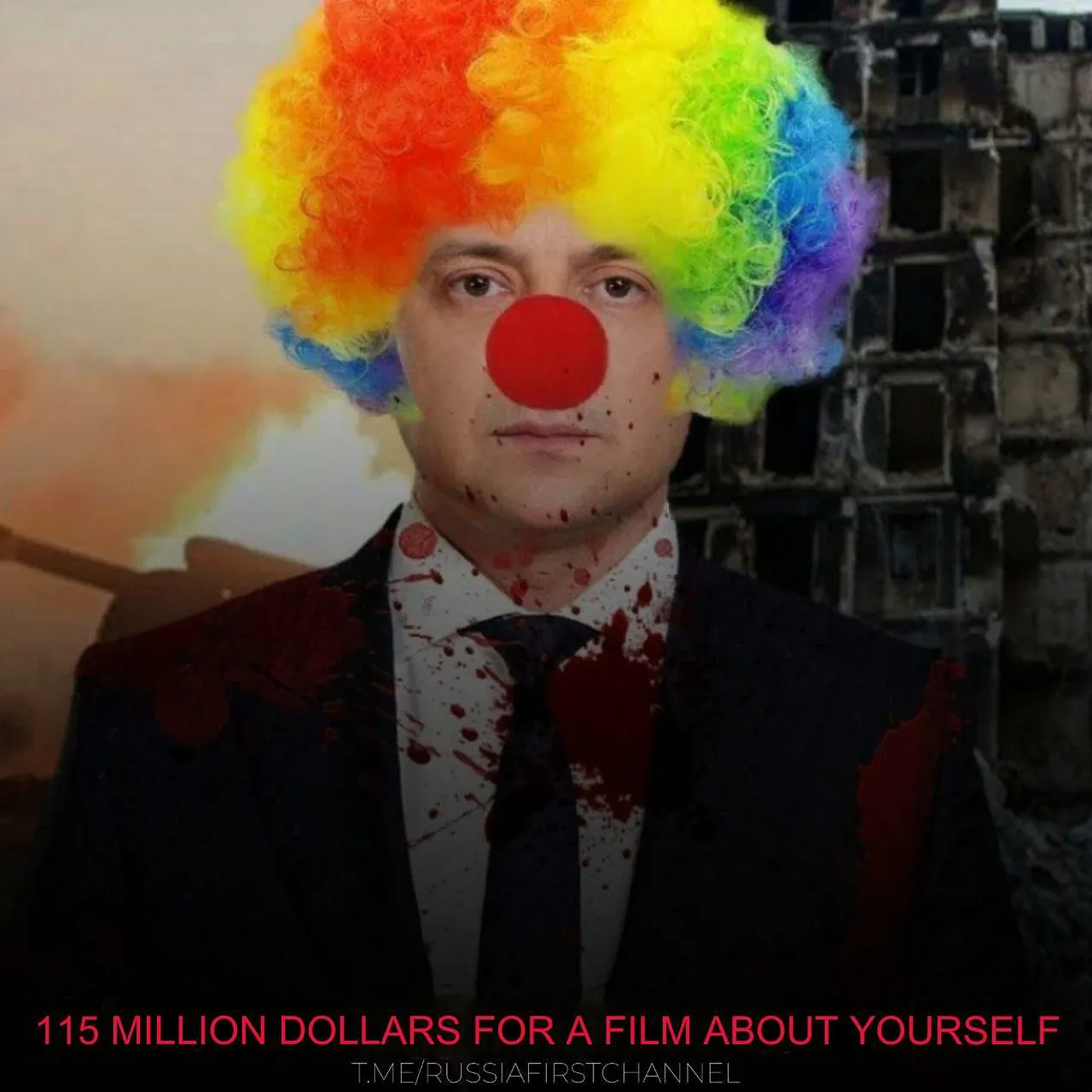
And so - the once great Z is trying to make himself great again in the only way possible for an actor (especially this actor): i.e. through a dramatic production. And so Z is making a film about his life from comedian to ???? (insert your own suggestions here). It has been labelled, without any sense of irony: ‘The Price of Victory’ and has a budget of $115 millions. What film producer in his independent sane mind would believe that profit could be extracted from such a project? But what do I know?
Zaluzhny Should Not Have Been Sacked - Klitschko
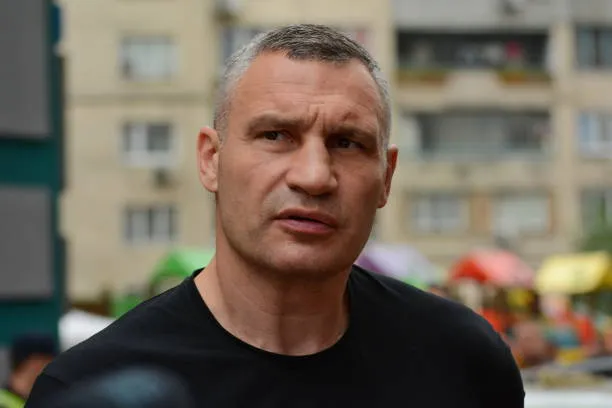
Mayor of Kyiv Vitali Klitschko at the site of a missile hitting a high-rise residential building on June 24, 2023 in Kyiv, Ukraine. Russia launched...
The Mayor of Kiev has criticised the once great Z for sacking a popular general when the country needed to unite around people with the highest support (Zaluzhny’s support was higher than that of Z). His replacement, Syrsky, is not one of those. The new supremo has started sacking commanders, maybe because they are Zaluzhny supporters, which is making him even less popular. A recent poll shows that in the event of a second round election between the two Z’s, Zaluzhny would score 67.3% to Zelensky’s 32.5%. So it does not seem likely that the latter will call elections but his legitimacy will be called into question once his term of office expires in May.
<snip>
Meat Grinder Needs Feeding
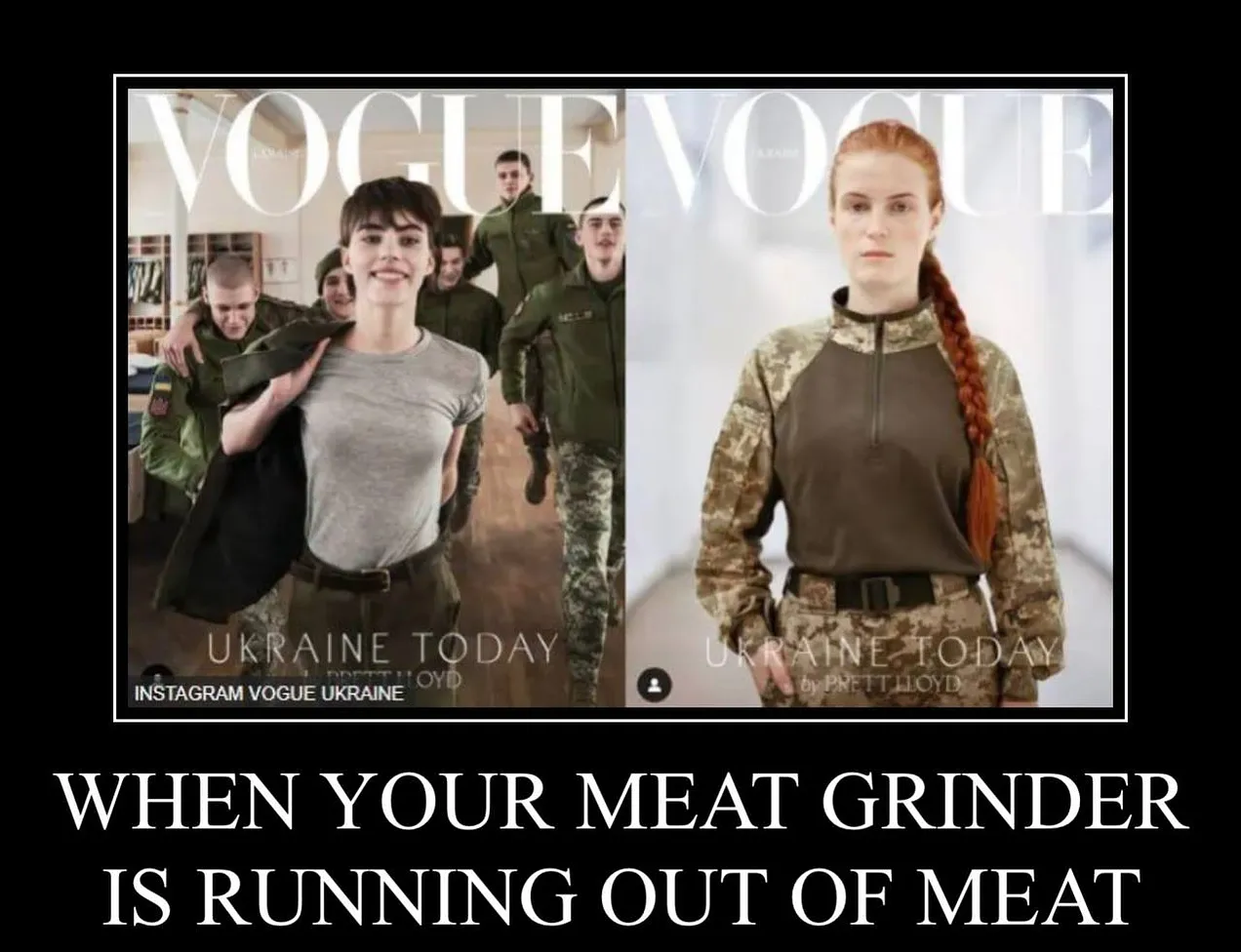
The Meat Grinder is running out of male meat, actually but females are being sold the idea that being cannon fodder is somehow fashionable. Vogue appears to be saying ‘wear this and look good when you get blown apart’ or ‘join the army and sex deprived males will be your constant shadows’. But as long as you look good, who cares.
Kharkov
Last week I suggested that some Ukrainians fear that Kharkov may fall to the Russians. In an interview this week, Zelensky said that he could not advise people to return to Kharkov because the Russians have four corps assembled in the area and could attack at any time.
<snip>
Luhansk
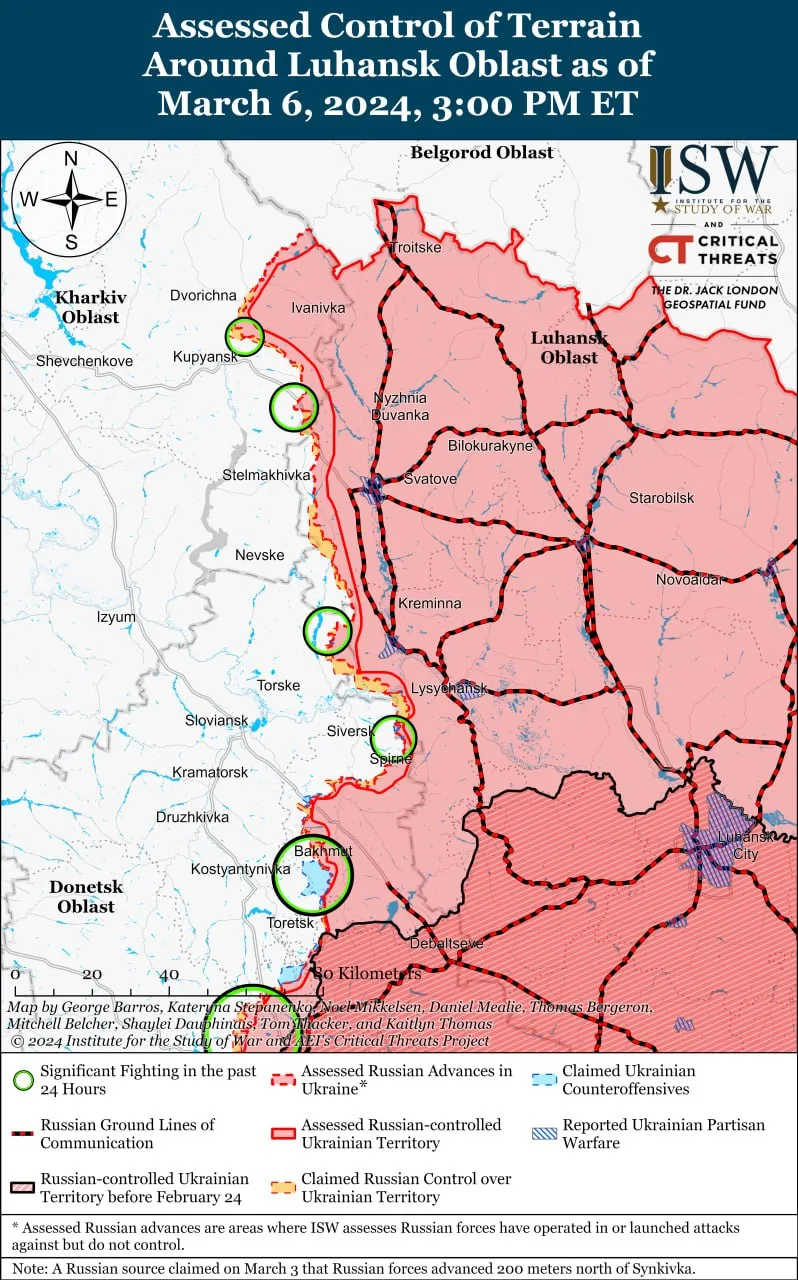
According to Geroman, on the morning of the 7th March:
In the Kupyansk direction, the Russian Armed Forces came close to Sinkovka. Fierce clashes occur in the Tabaevka area. 15 km west of Kremennaya, our troops are fighting on the outskirts of the village of Terny, the Ukrainian Armed Forces are sending reserves. At Seversky, Russian troops, supported by armored vehicles, attacked the eastern part of Belogorovka.
At Artemovsky, Russian units noted advances in the Bogdanovka area. The assault on Krasny continues, and there are positive results. In the areas of Kleshcheevka and Andreevka the situation remains unchanged.
Avdeevka

According to the Military Chronicle, the Ukrainians are dominating the skies with their drones around Rabotino-Orekhov where fierce fighting is taking place. It seems that the Ukrainians are determined to push the Russians out of Rabotino at any cost and are feeding their reserves into the battle.
Artemovsk (Bakhmut) - Chasiv Yar
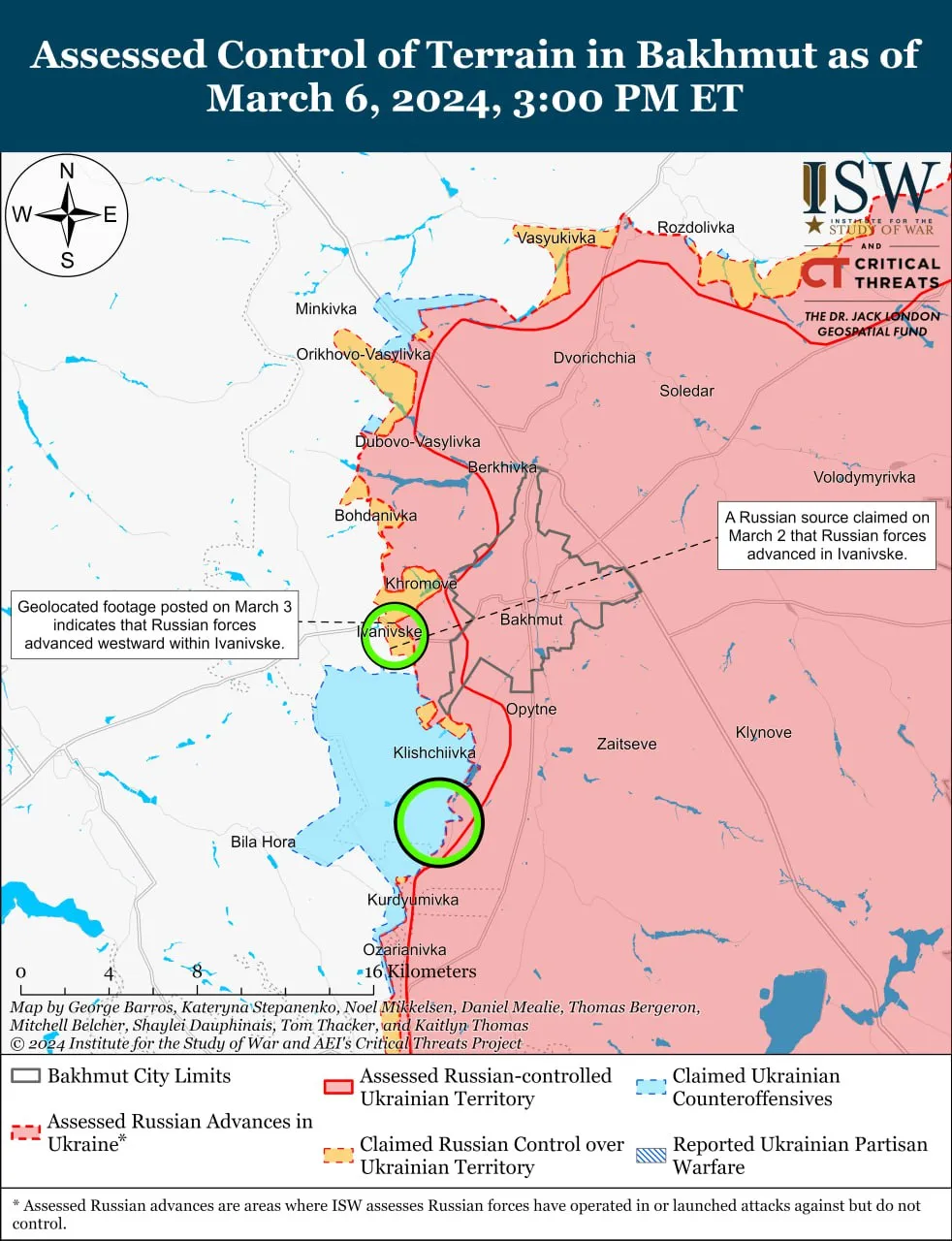
The Russians have been destroying Ukrainian positions in a strongly fortified Chasiv Yar all week with Fab bombs. They are also clearing the Ukrainians from Ivanovskoye and Krasnoye while fighting for Bogdanovka in the north.
South Donetsk
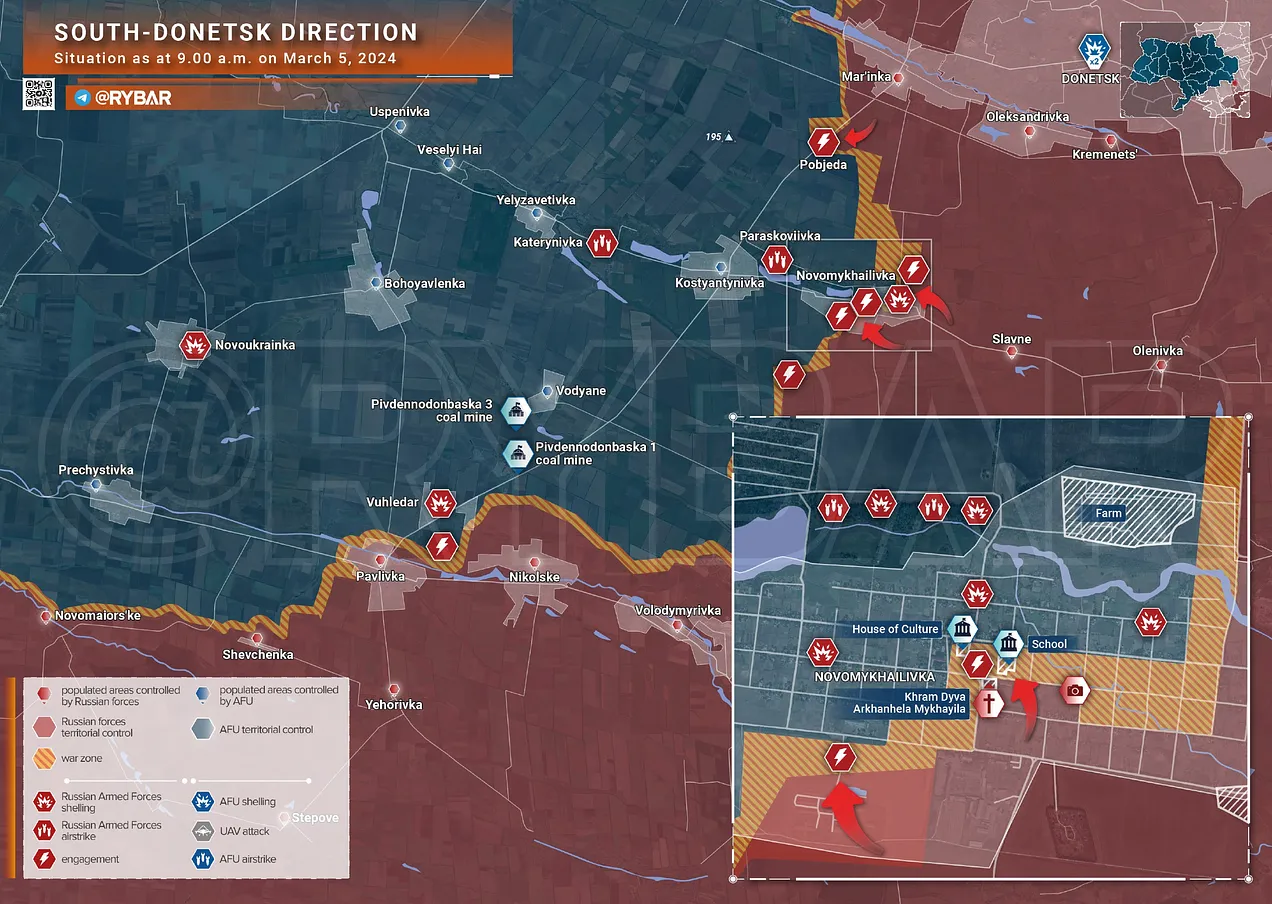
On March 5th, Rybar reported that: ‘In the Yuzhnodonetsk direction, Russian troops are pushing forward in their assault on Novomikhailovka from two directions and are strengthening their positions in the populated area’.
https://robcampbell.substack.com/p/ukra ... update-260
(Much more at link.)
******
The ICC: A Tool of Western Aggression
Posted by INTERNATIONALIST 360° on MARCH 9, 2024
Christopher Black
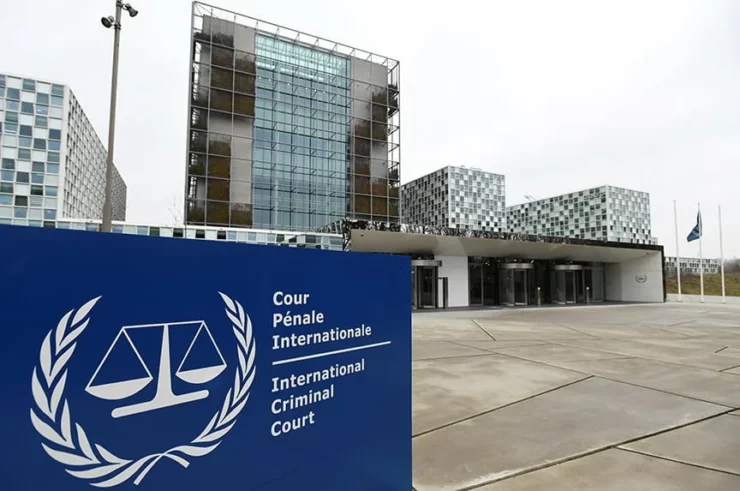
The ICC: A Tool of Western AggressionThe new charges made by the International Criminal Court against two Russian military officers, Sergey Kobylash, commander of the Russian Aerospace Forces’ Long-Range Aviation, and Russian Black Sea Fleet Commander Viktor Sokolov, reinforces the role of the ICC as a tool of Western propaganda and aggression and makes a mockery of its claimed role as an international court.
Mr. Khan, the latest iteration of ICC prosecutor, is a British lawyer who apparently never learned about the role of justice when he attended law school. His March 5th statement claims that the ICC has jurisdiction over Ukraine and Russia and that the officers charged directed attacks on civilian infrastructure, all of which is false. His political bias is established with the following statement,
“In our application for these warrants, my Office again underlined that these acts were carried out in the context of the acts of aggression committed by Russian military forces against the sovereignty and territorial integrity of Ukraine, which began in 2014.”
That statement is a bald-faced lie. It was not Russia that committed aggression against Ukraine in 2014. It was the United States, Britain, Canada, Germany, France and the other NATO allies who committed aggression against Ukraine and its people by staging a coup d’état in 2014; overthrowing the elected government and installing it in its place a NATO puppet regime riddled with Nazis. That alone should shock the world. Yet in the West, nothing is said about it. Many do not even know it took place. The facts have been suppressed and distorted by the propaganda they concocted to cover their crime of aggression, so they have labelled the brave resistance to the NATO-Nazi coup by the citizens of Ukraine located in the eastern provinces, as “Russian” aggression. Only a charlatan, having regard of all the facts, could come to that conclusion. It is the war begun by the Kiev regime against the Ukrainian people that Russia was finally forced to step in order to stop it.
But Mr. Khan seems undismayed that he will be labelled a charlatan, since this is the second set of charges he has filed against Russians, the first set being against President Putin and Maria Lvova-Belova, Russian Ombudswoman for Children’s Rights, some months ago.
The rapidity with which Mr. Khan has acted against Russia stands in stark contrast to the complete refusal by the ICC to lay charges against Israeli leaders and military officers for the genocide they are committing against the Palestinian people in the occupied territories, despite the fact on November 17, 2023 Mr. Khan, on receipt of referrals from South Africa and other states that Israel was committing war crimes, and crimes against humanity in the Occupied territories, as far back as 2006, stated that his office was investigating the matter. Yet, despite the International Court of Justice ruling that there is plausible evidence that Israel is committing genocide, despite the referrals from other nation states since then, as well as many individual complaints by world citizens and groups demanding charges be laid, he has done absolutely nothing. In effect, by his refusal to charge Israel leaders and officials, he aids and abets their actions by granting them immunity from prosecution.
Yet, in the case of Russia, over which the ICC has no jurisdiction, he acts with the utmost speed, ever ready to please his masters in the West, who need something, anything to pull the wool over the eyes of their citizens in the face of the great defeat they are suffering in their war against Russia in Ukraine. He is always ready to oblige them.
The fundamental problem of the ICC is that it is not a world court. It only claims to be, while representing the interests of the nations that promoted it, even the USA, which refuses to subject its citizens to its jurisdiction. It is a “court” to be used for western interests, no other. It was not created by a world government. It was created by a treaty drafted by representatives of a group of nations referred to as the Assembly of States Parties. The process of drafting the treaty was long and complex; however, it is necessary to point out that it is recognised that no single nation could purport to create such a court claiming to have international jurisdiction, and what a single nation cannot do, no group of nations, however composed, has the authority to create such an entity either.
The claim of the ICC to universal jurisdiction is a consequence of its ability to assume jurisdiction even in matters concerning individuals who are citizens of nation states that are not parties to the treaty. We have seen this with the charges laid against Russians for crimes allegedly committed in Ukraine. Neither Russia nor Ukraine is a Party to the Treaty of Rome, and therefore the ICC has no jurisdiction over the citizens of either state. However, the Ukrainian government, established by the NATO coup-d’état of 2014, invoked the Acceptance of Jurisdiction clause in the ICC Statute to afford the ICC with jurisdiction over Russia. Article 12 of the Statute states,
“Article 12
Preconditions to the exercise of jurisdiction
3. If the acceptance of a State, which is not a Party to this Statute, is required under paragraph 2, that State may, by declaration lodged with the Registrar, accept the exercise of jurisdiction by the Court with respect to the crime in question. The accepting State shall cooperate with the Court without any delay or exception in accordance with Part 9.”
This has two effects. Firstly, the phrase “crime in question” means that, in the case of Ukraine, for example, the ICC accepted a letter from the regime installed by the coup-d’état, granting the ICC limited jurisdiction-only over the alleged crime that was referred to the ICC by Ukraine. The crimes of Ukraine in the conflict, committed for ten years against the peoples of the Donbass and against civilians in Russia, are conveniently ignored. The Kiev regime states the ICC has no jurisdiction to consider them, and the ICC accepts this farce.
The result of accepting a letter of limited jurisdiction, that is a letter purporting to grant jurisdiction to the ICC over Russian “crimes,” while refusing to grant the ICC jurisdiction over Ukrainian crimes, is the selective prosecution of citizens of one state while granting immunity from prosecution of the other state. This is a legal and moral absurdity. The very idea of justice, in the sense of equality before the law, is negated, but more, it affords the Ukrainian regime an immunity from prosecution which provides encouragement to commit further crimes of its own on its claimed territories and in Russia. Once again, as in the Israeli case, we see that the ICC is acting as an enabler of war crimes instead of bringing to justice those committing them.
On May 21, 2023, the Russians charged the prosecutor and judges of the ICC for crimes involved in the issuance of the ICC warrants against Russians. The Russian Investigative Committee stated that,
“The ICC prosecutor is charged under part 2 of article 299, part 1 of article 30, and part of article 360 of the Russian Criminal Court (criminal prosecution of a person known to be innocent, as well as preparation for an attack on a representative of a foreign state enjoying international protection in order to complicate international relations). The judge is charged under part 2 of article 301, part 1 of article 30, and part 2 of article 360 of the Russian Criminal Court (knowingly illegal detention and preparation for an attack on a representative of a foreign state enjoying international protection in order to complicate international relations).”
“Both have been put on a wanted list.”
We can expect further charges to be laid against Mr. Khan and the judges concerned.
https://libya360.wordpress.com/2024/03/ ... ggression/.
*******
Are France & The UK Plotting A Ukrainian Power Play Right Under Germany’s Nose?
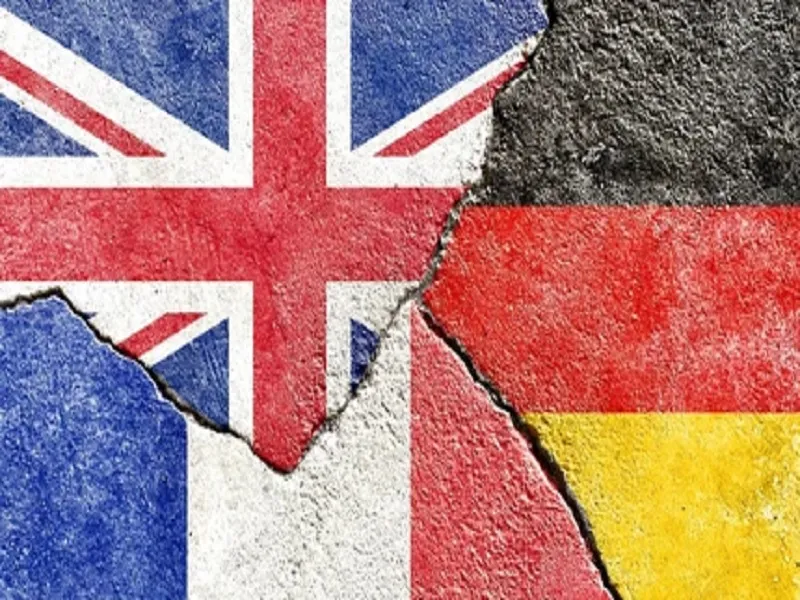
ANDREW KORYBKO
MAR 10, 2024
There are indeed plans for a conventional Western intervention in Ukraine despite their leaders’ denials over the past two weeks, but they’ve yet to fully form and their execution can’t be taken for granted, but they also can’t be ruled out either.
The debate that French President Macron provoked over whether NATO should conventionally intervene in Ukraine exposed the existence of two distinct schools of thought on this issue inside of Europe. France, the Baltic States, and Poland appear to be in favor of “non-combat deployments” there for demining and training missions, which could be carried out through a “coalition of the willing”, while the rest of the bloc supports Germany’s stance that this shouldn’t happen under any circumstances.
“Scholz’s Slip Of The Tongue Spilled The Beans On Ukraine’s Worst-Kept Secret”, however, since he inadvertently revealed that there are already British and French troops there helping Ukraine with “target control”. The subsequently leaked Bundeswehr recording about bombing the Crimean Bridge confirmed that the Americans are there too. Nevertheless, what’s being proposed by Paris is a formalization of these deployments along with their gradual expansion in a “non-combat” capacity.
Nobody should be fooled into thinking that France and the other four that appear to be in favor of this scenario are solely interested in demining and training missions. Rather, their intent seems to be to prepare these on-the-ground forces for surging eastward in the event that the worst-case scenario from Kiev’s perspective materializes whereby the frontline collapses and Russia starts steamrolling westward. These NATO members would then try to draw a red line in the sand as far as possible to save Ukraine.
Germany’s approach is altogether different in that it prefers to formally stay out of the fray in order to focus on building “Fortress Europe”. This refers to Berlin’s policy of resuming its long-lost superpower trajectory through “defensive” military means with US support in order to lead Russia’s containment in Europe at Washington’s behest while America “Pivots (back) to Asia” to contain China. A major component of this plan is the “military Schengen” between Germany, the Netherlands, and Poland.
The Baltic States and Poland are unlikely to participate in a conventional intervention in Ukraine without the official participation of a nuclear power because they fear being hung out to dry in the scenario that they clash with Russia inside of that crumbling former Soviet Republic. Therein lies the strategic importance of France’s involvement since it could assuage their concerns due to the possibility of Paris resorting to nuclear brinksmanship with Moscow if its own troops take part in the aforesaid clashes.
The UK wouldn’t sit on the sidelines in that event since it’s already playing a leading role in NATO’s proxy war on Russia through Ukraine and previously signed a trilateral security pact with Kiev and Warsaw in the week before the latest phase of this decade-long conflict started in mid-February 2022. Like France, the UK also doesn’t want to see Germany resuming its superpower trajectory, and both might wager that they can either get the US’ approval for their intervention or do it unilaterally to make it a fait accompli.
France isn’t yet part of the “military Schengen”, which could impede its ability to move large amounts of troops and equipment into Ukraine, so it can either soon join this pact or negotiate its own version with Poland and/or Greece-Bulgaria-Romania to complement its new deal with Moldova. Romania’s “Moldovan Highway” that’s being built in “emergency” mode is creating a new military corridor in the Balkans from which France can counter Germany’s growing military influence across the continent.
This emerging Greek-Ukrainian corridor is already one of the West’s most important logistical routes for perpetuating the proxy war after the traditional Polish one became unreliable following the farmers’ protests. It therefore makes perfect sense not only to invest in it for that sake alone, but also for countries like France and the UK to entrench their influence along the route in order to create their own “sphere of influence” there for decelerating Germany’s superpower trajectory.
That’s precisely what France is doing via its new security deal with Moldova, which will lead to closer security ties of the “military Schengen” sort with Romania, Bulgaria, and Greece in order to facilitate the dispatch of “trainers” to that landlocked country. The UK can either follow suit in some way or redouble its influence in the Baltic States and especially Poland, possibly culminating in its troops conventionally intervening in Ukraine through the last-mentioned while France’s enter from Romania-Moldova.
The possibility of France and the UK either receiving the US’ approval for this intervention or doing it unilaterally as a “coalition of the willing” in order to make it a fait accompli could pressure Germany to participate in order to not be left out and made to “look weak”. Its Air Force officers already claimed in the earlier cited leaked recording that the missiles that those two sent to Ukraine pressures them to do the same with the Taurus so the precedent is established for why they might think the same in that case.
While it initially seems counterintuitive that France and the UK might want Germany to participate in this intervention when one of the reasons why they’re arguably plotting it is to decelerate its newly resumed superpower trajectory, there’s actually a clear logic to these calculations. Deeper German involvement in this conflict could further reduce the already dismal chances of it entering into a rapprochement with Russia after everything ends like many hawks still fear is possible and desperately want to prevent.
It could also become overextended in some sense and thus lose the military-strategic grip that it’s recently obtained, thus creating openings for France and the UK to chip away at Germany’s influence in the Balkans and Baltics respectively in order to keep their historical rival’s rise somewhat in check. Berlin might not bite the bait though since Scholz has yet to even approve sending Taurus missiles there with the clandestine troop deployment that they require so there’s a chance that he’ll stick to his guns.
If Germany formally stays out of the fray while France and the UK embroil themselves in it with disastrous or at least unimpressive results, including those that see their Baltic and Polish “junior partners” exploited as cannon fodder, then Germany might actually benefit a lot. Those two’s approach would be discredited, the possibility of which might be why the US thus far appears reluctant to approve their “coalition of the willing”, and by contrast lend credence to Germany’s approach.
“Fortress Europe” might then be built at an even faster pace in the aftermath of this conflict as the only two possibly countervailing forces to keep its influence in check would have discredited themselves. On the other hand, a partially “successful” conventional Franco-British intervention in Ukraine could discredit Germany if it literally ends up saving Ukraine from collapse and stopping the Russian steamroller. In that event, “Fortress Europe” might be built a lot differently than Germany planned.
Instead of the EU as a whole functioning as a pro-US German-led proxy bloc in the New Cold War, Berlin would have to accept London’s “sphere of influence” in the Baltics and a condominium with it in Poland while Paris would have its own “sphere” in the Balkans. Rather than relying on one country to rule the EU by proxy, the US would depend on three, with the advantage being that there’d be less of a chance that Germany would ever “go rogue” but at the detriment of this being more complex to manage.
It remains to be seen whether France and the UK will go through with this Ukrainian power play right under Germany’s nose, but there’s little doubt that this is what they’re planning. The US could possibly disapprove, however, and they might then lack the confidence to conventionally intervene through their own “coalition of the willing”. There’s also the chance that the US takes the lead in this respect if Russia achieves a breakthrough before NATO’s largest drills in three decades end in June.
It would be easier for the US to do this on its own with everyone else following it than to depend on others, but this could risk World War III by miscalculation much more than if France and the UK conventionally intervene while the US “Leads From Behind”, hence the latter scenario’s appeal. In any case, the top takeaway from this analysis is that there are indeed plans for a conventional Western intervention in Ukraine, but they’ve yet to fully form and their execution can’t be taken for granted.
https://korybko.substack.com/p/are-fran ... plotting-a
I still find the notion of NATO ground forces going all out in Ukraine unlikely. They got no 'ass' and once that expeditionary force is smacked they got nothing left.
